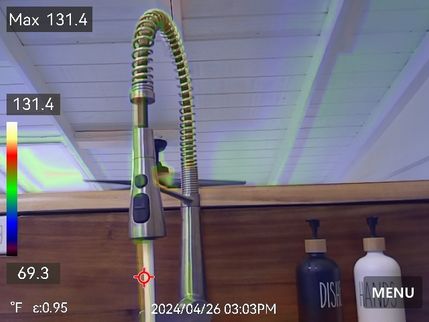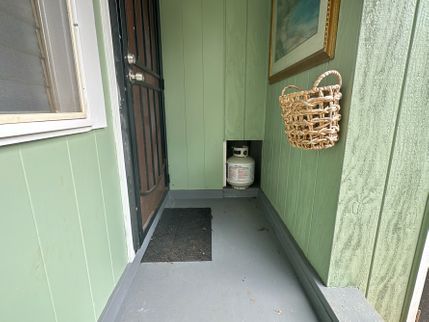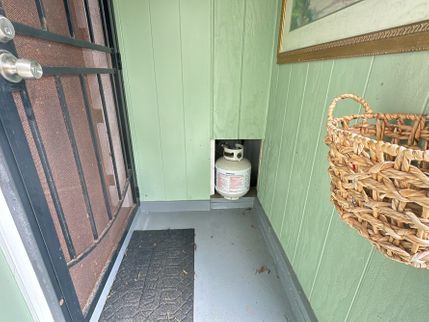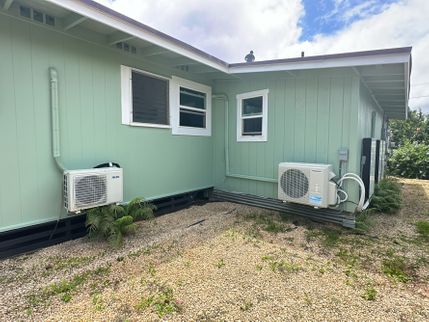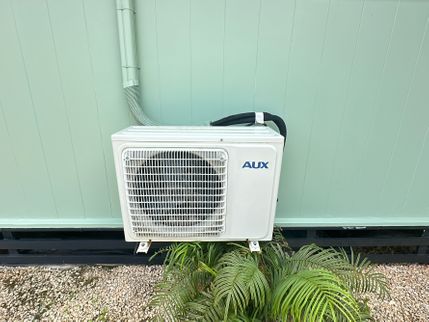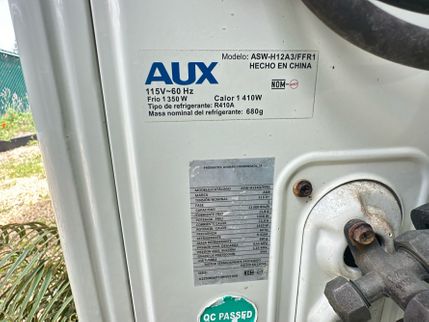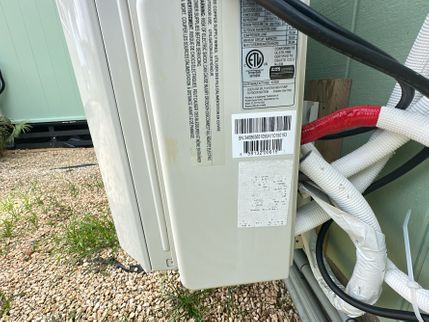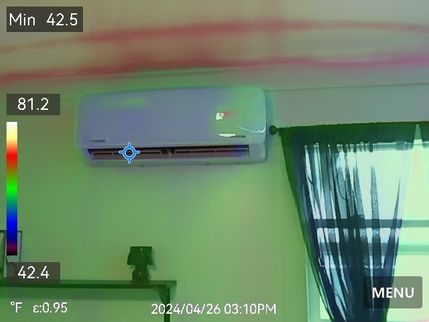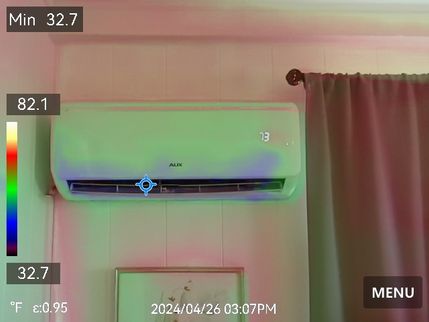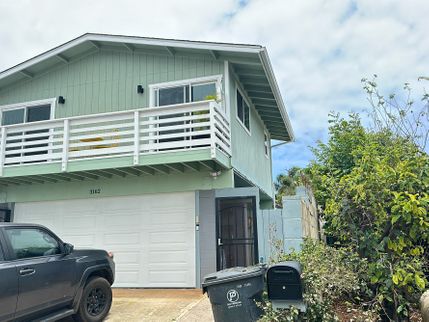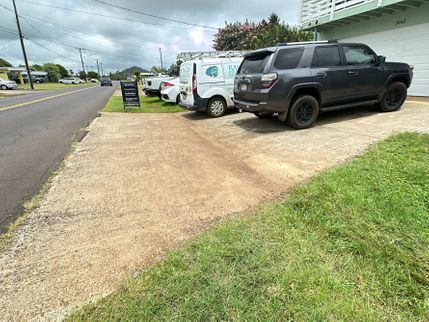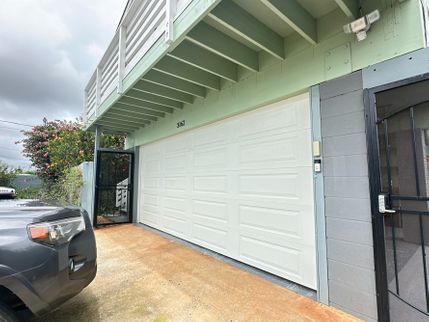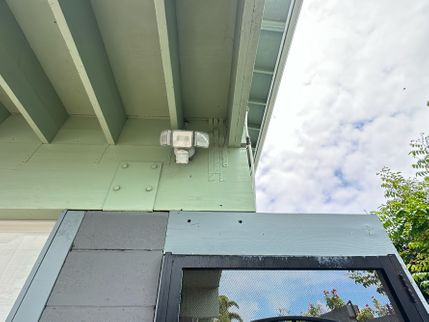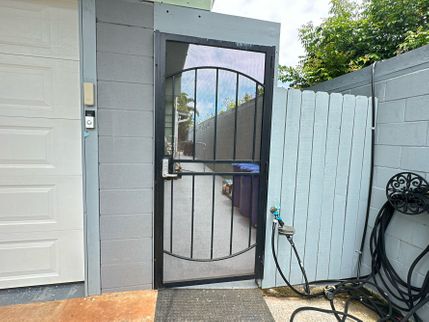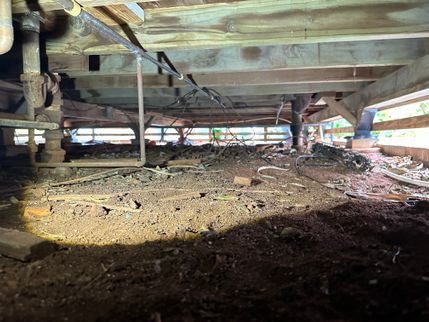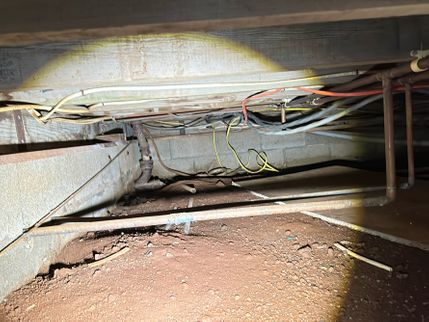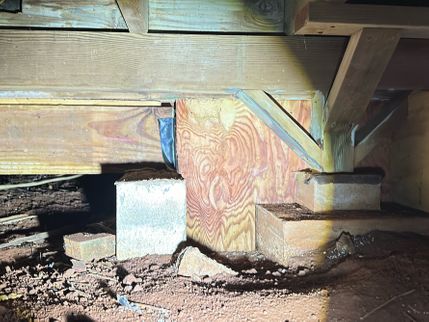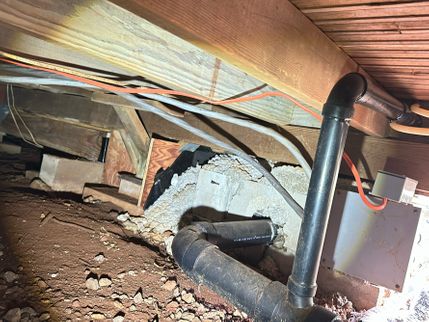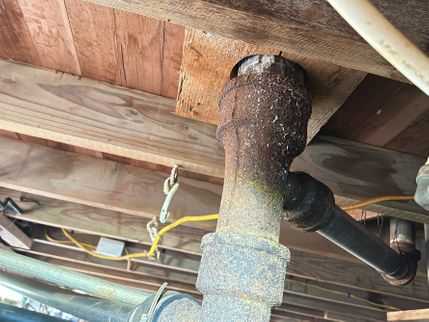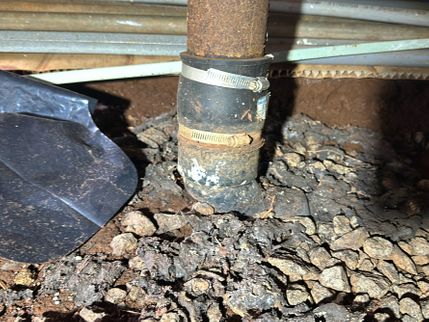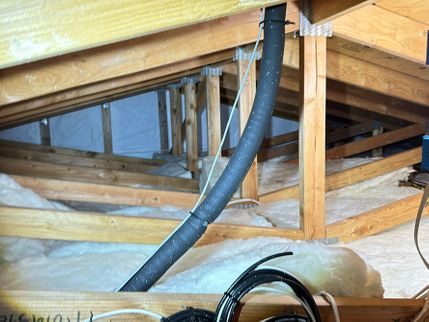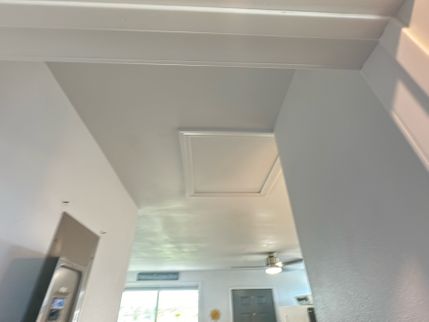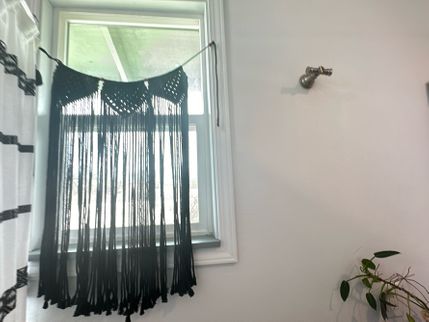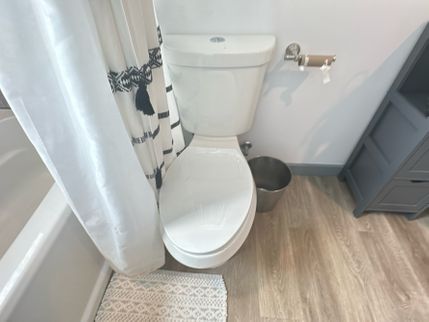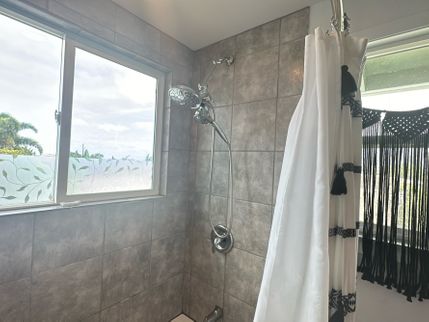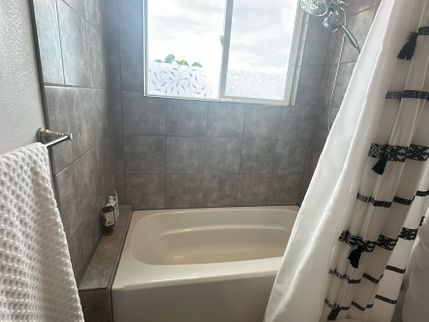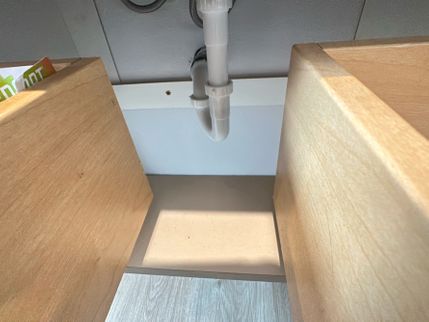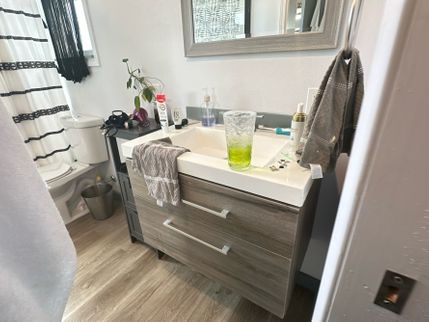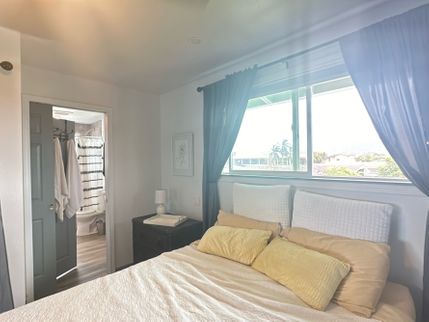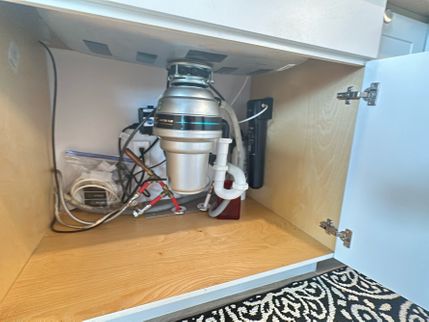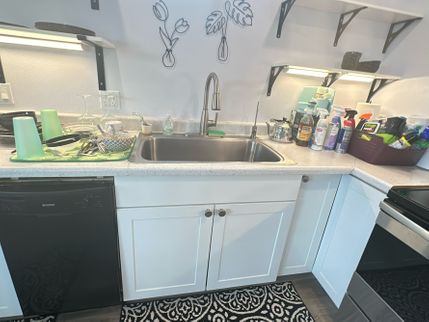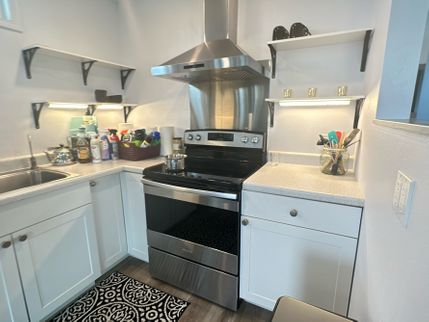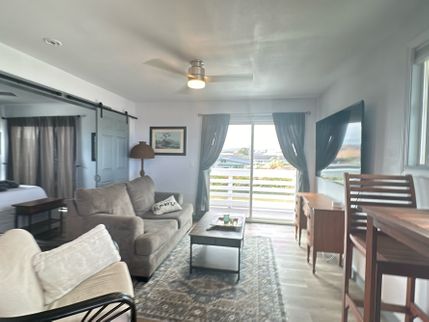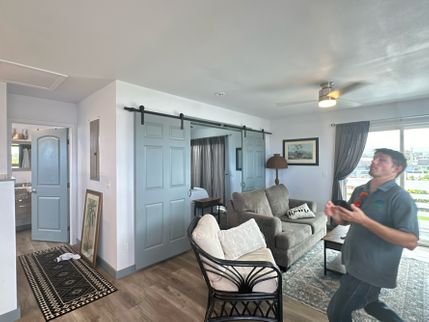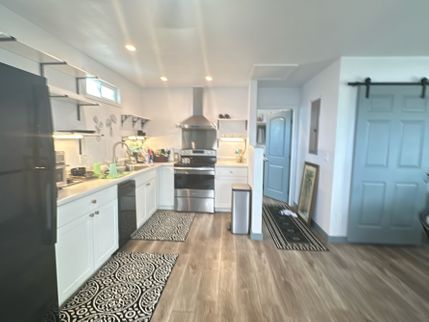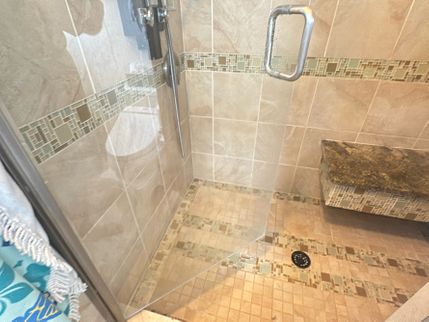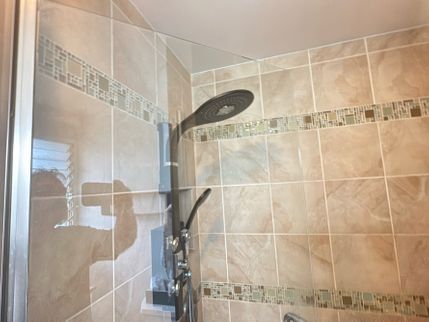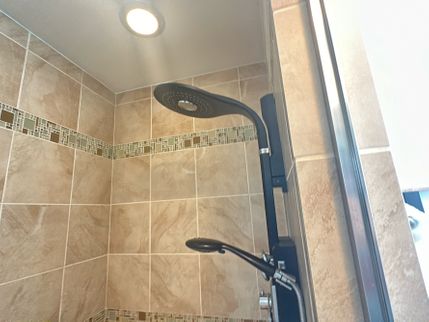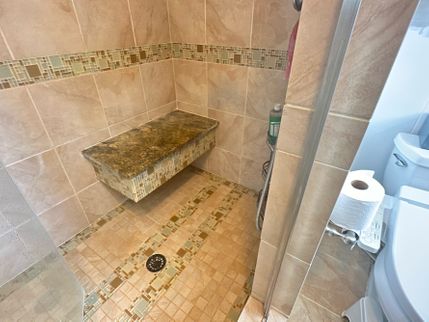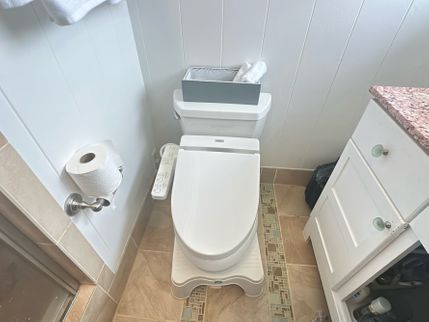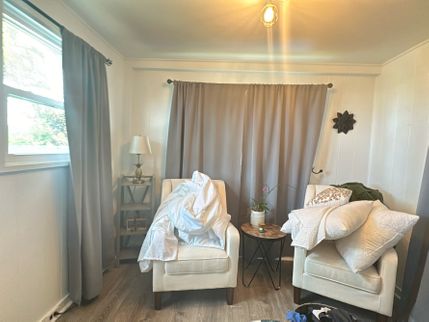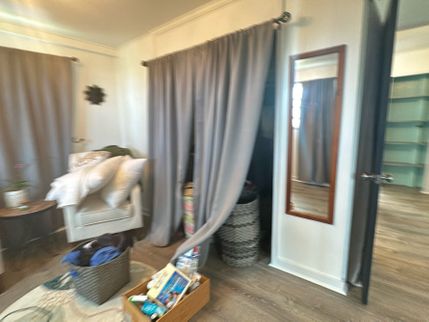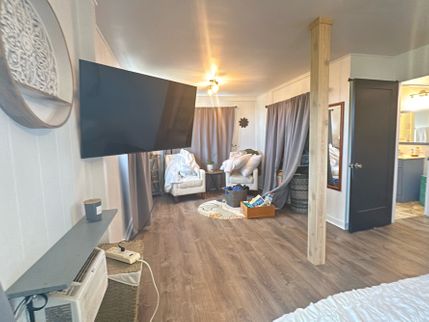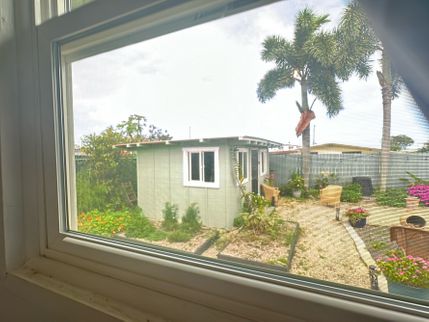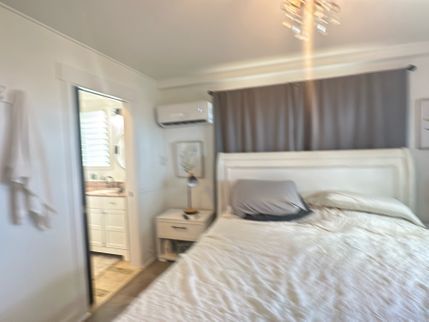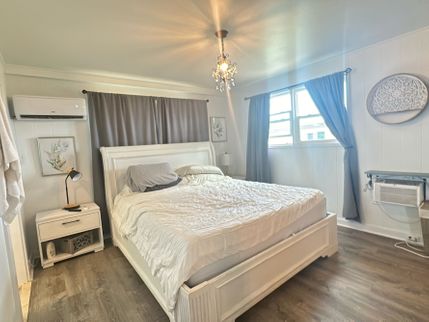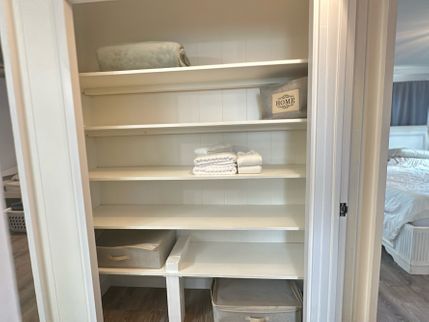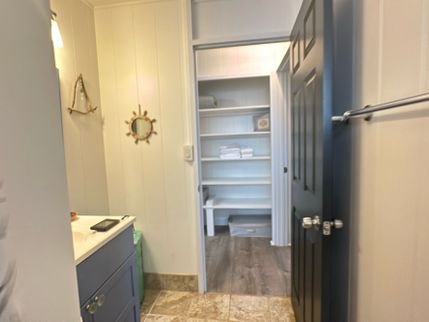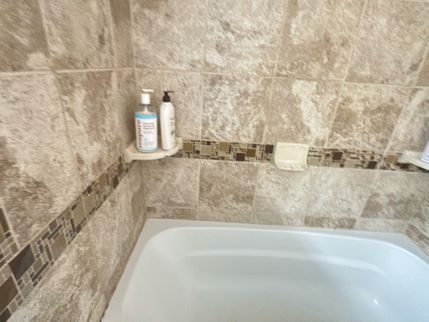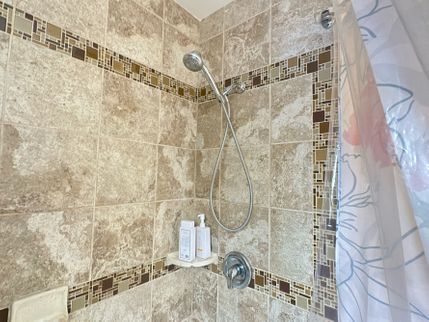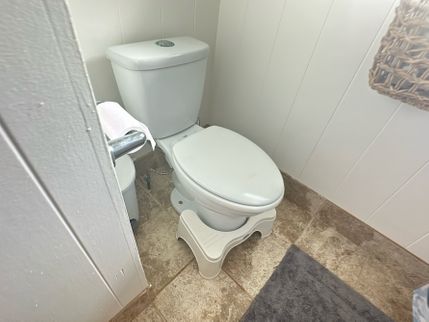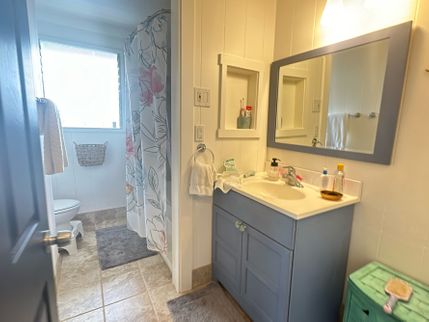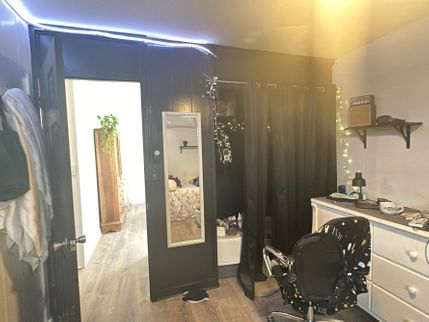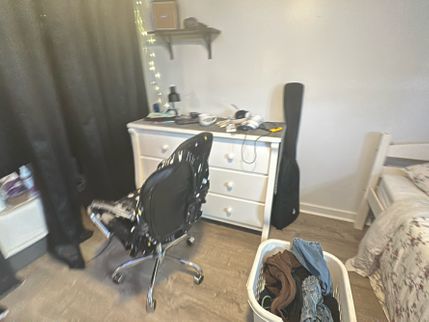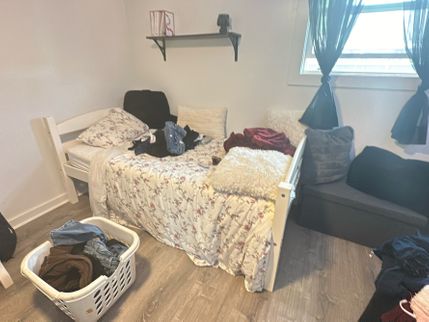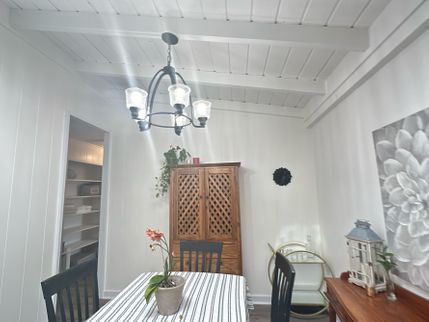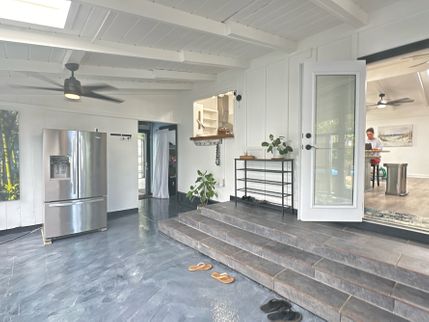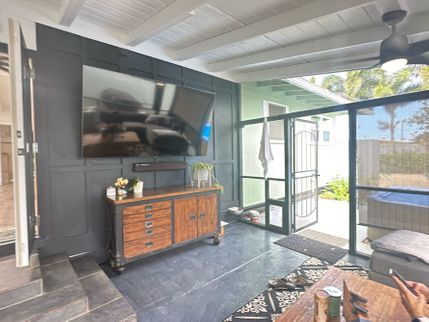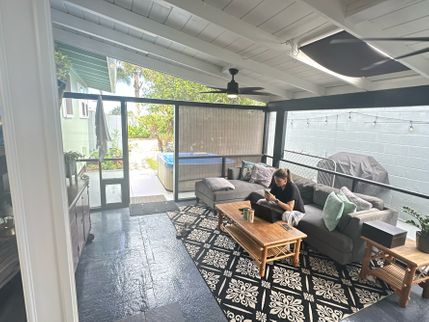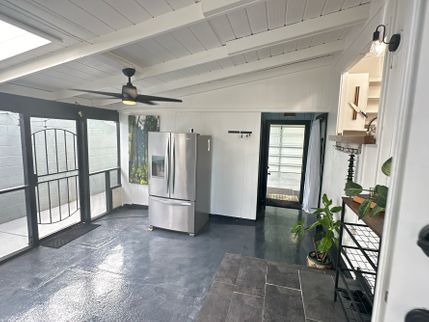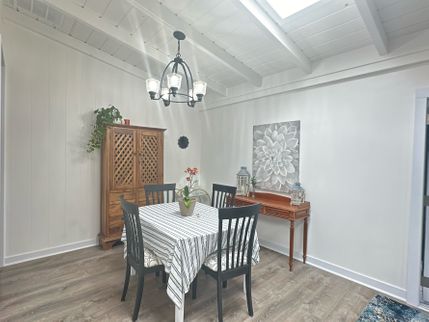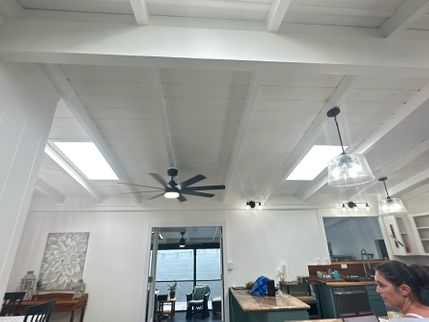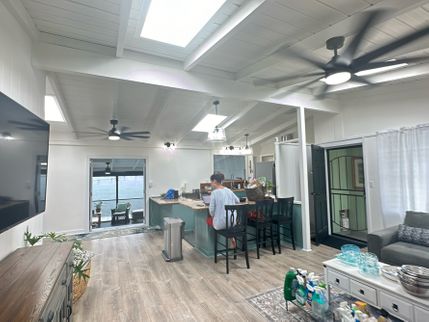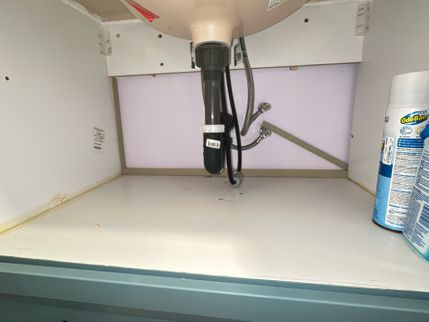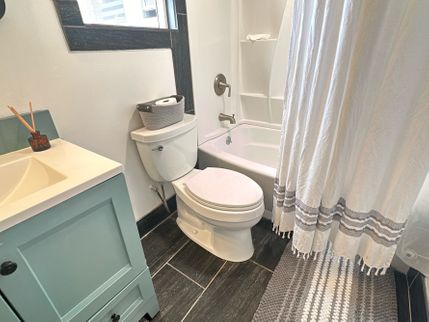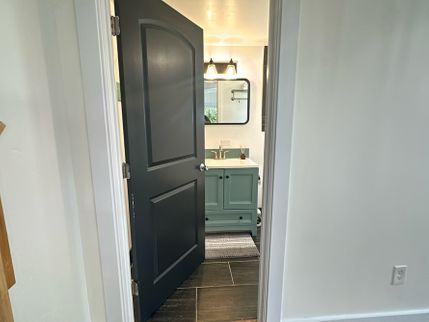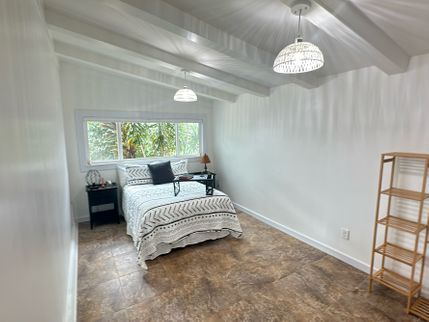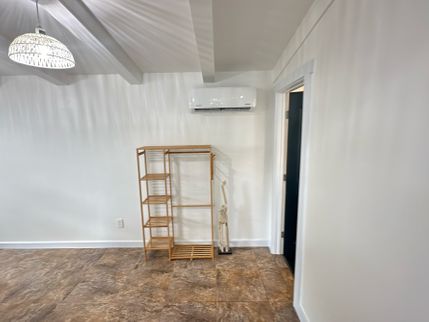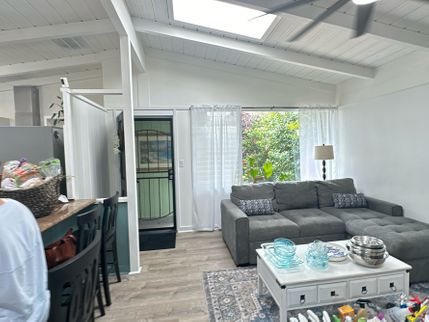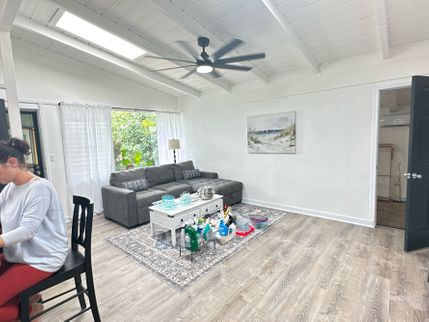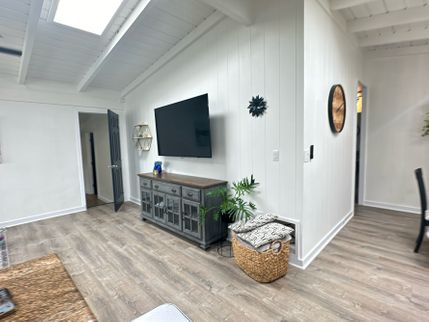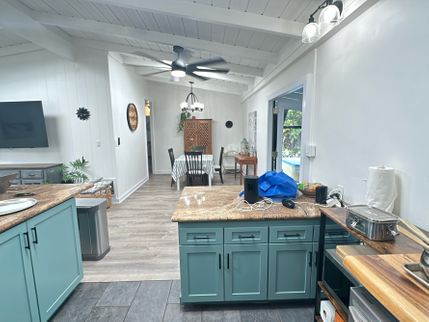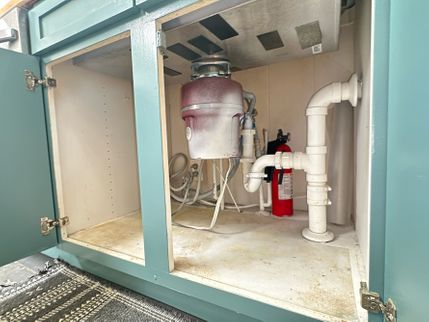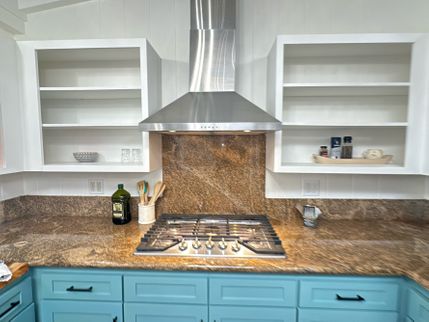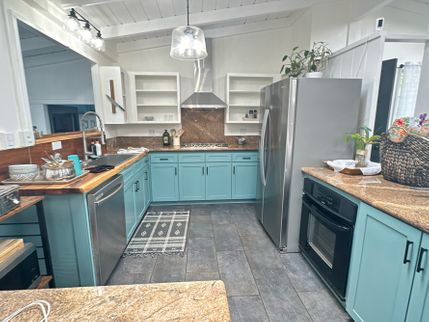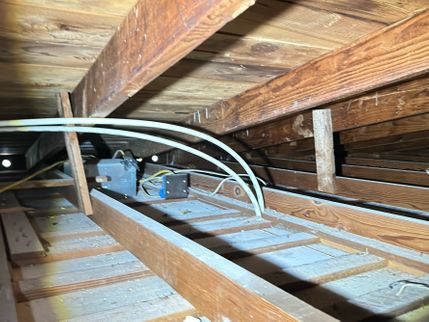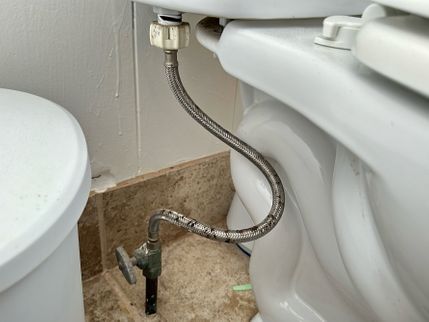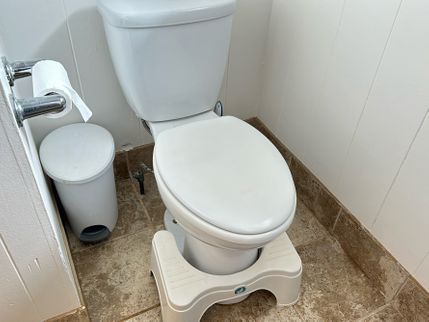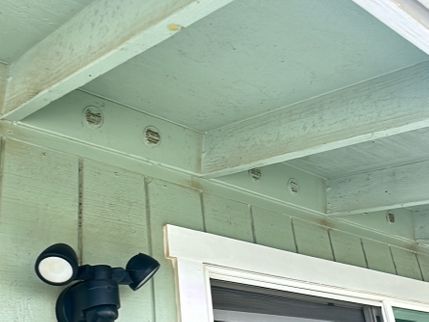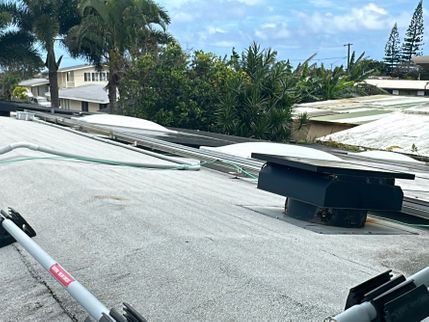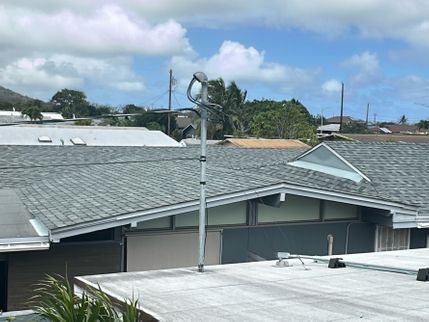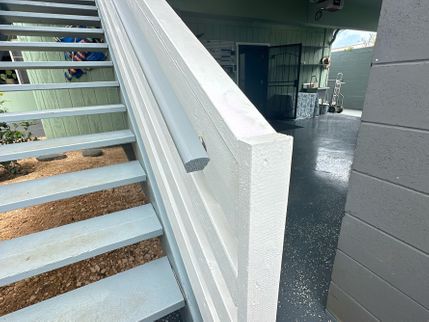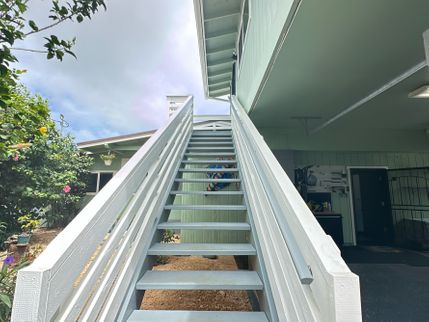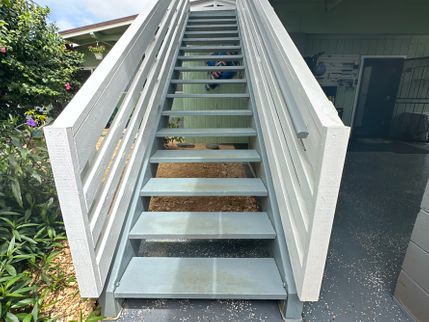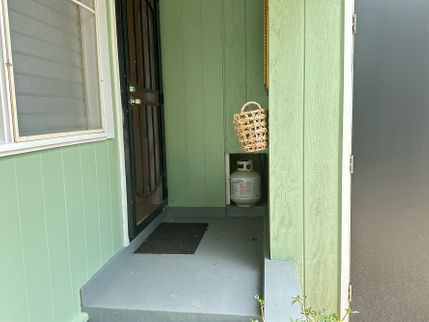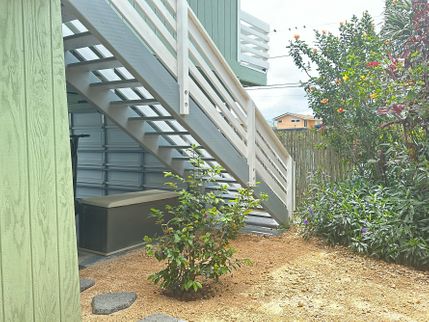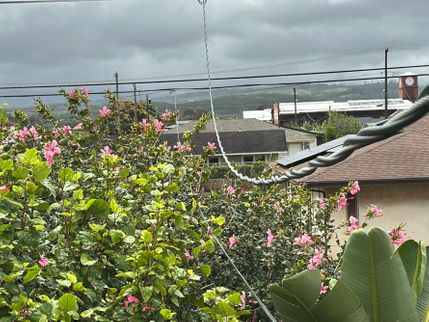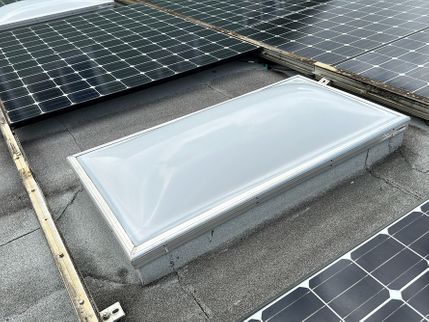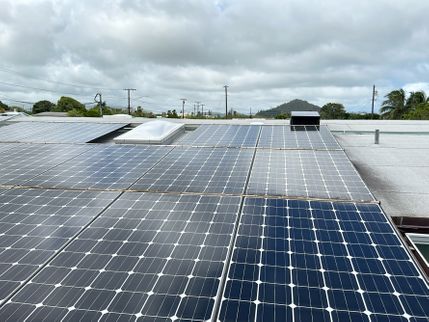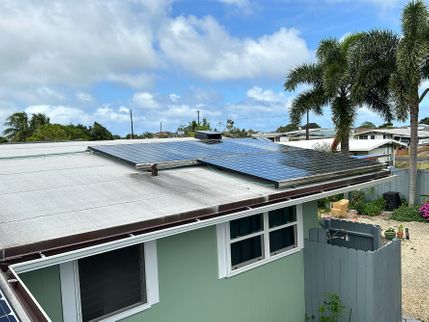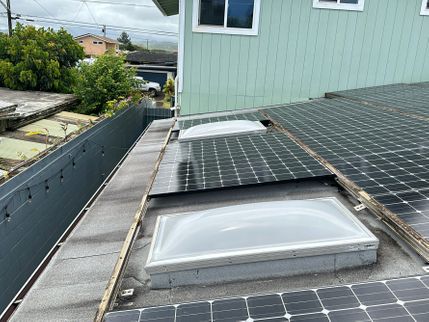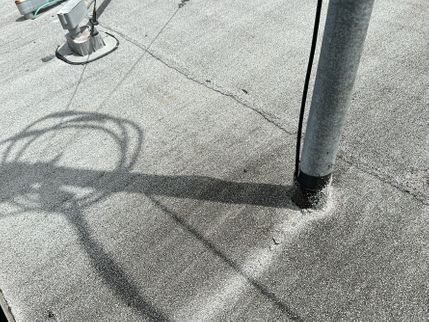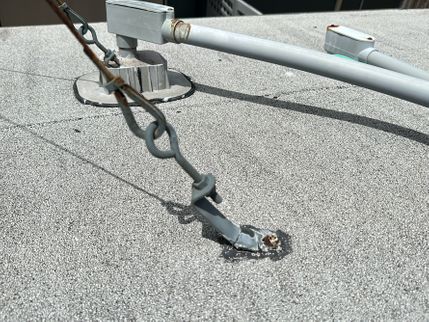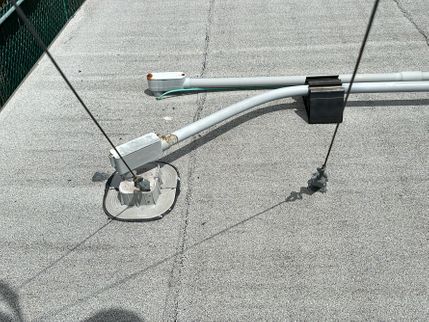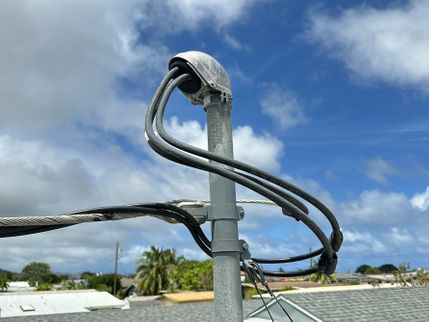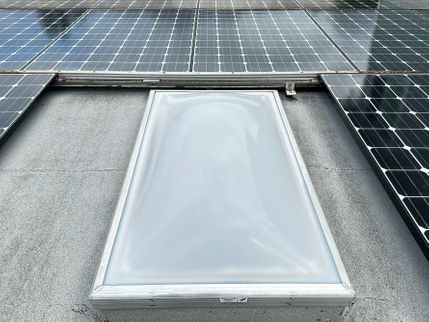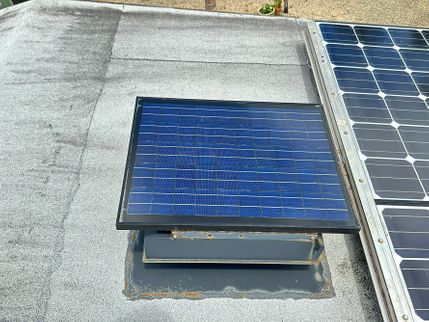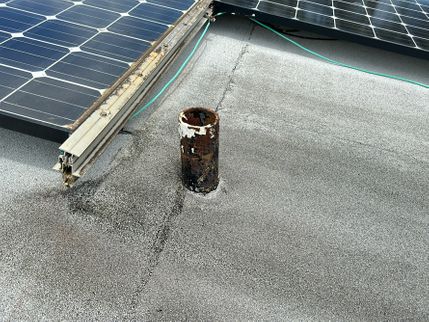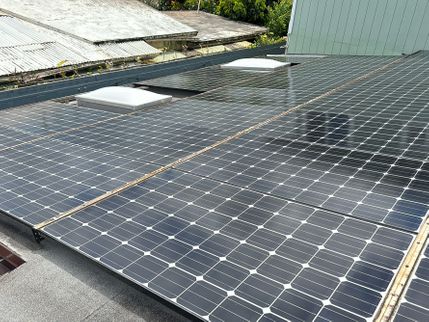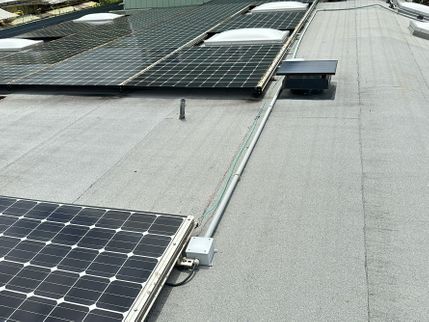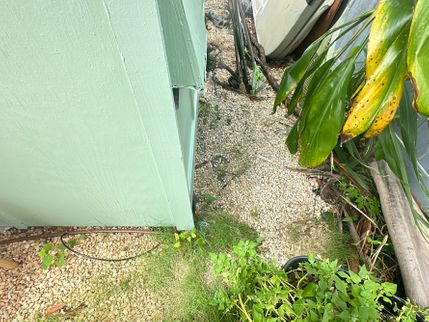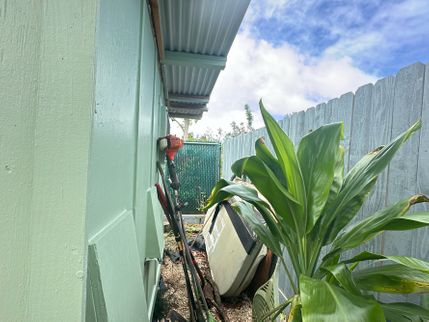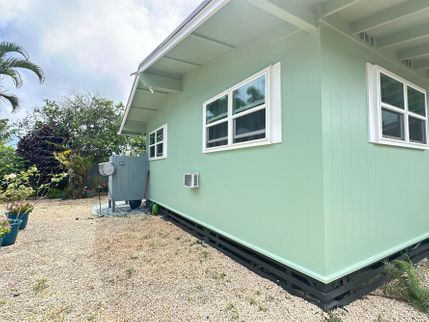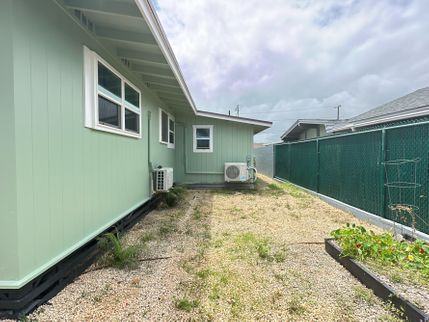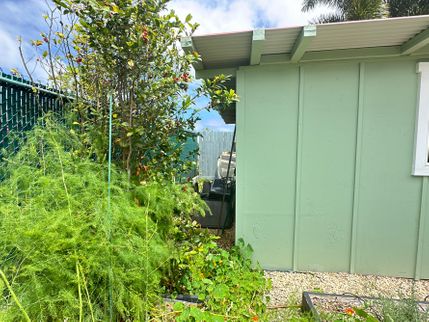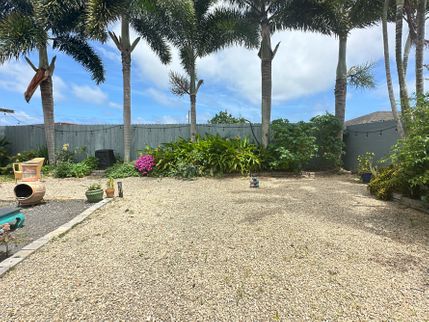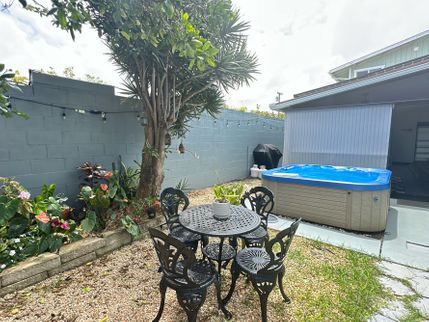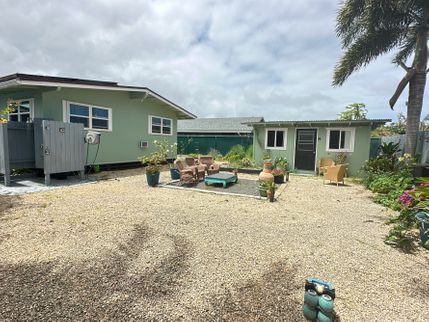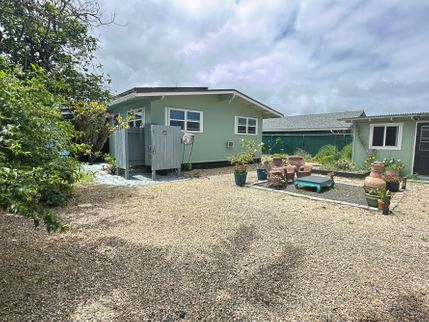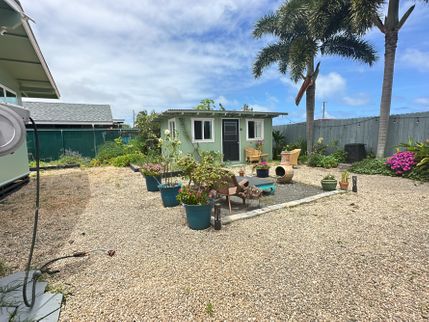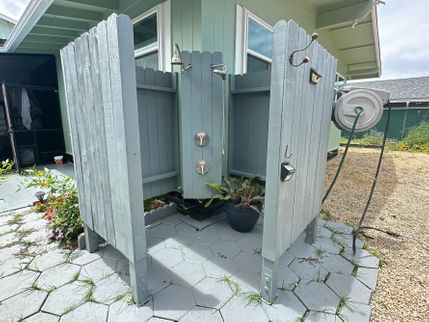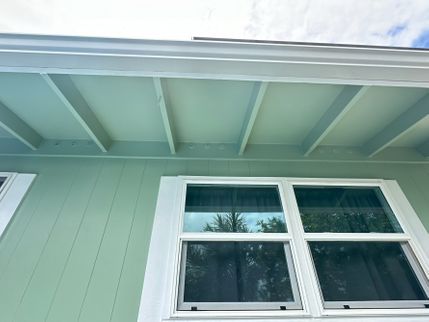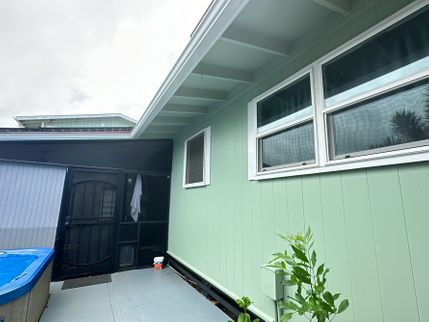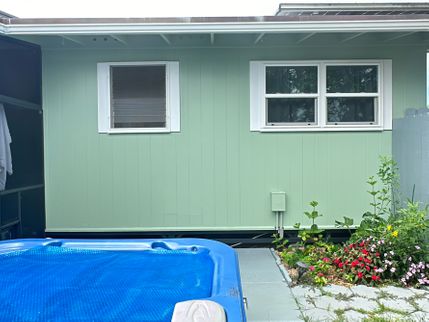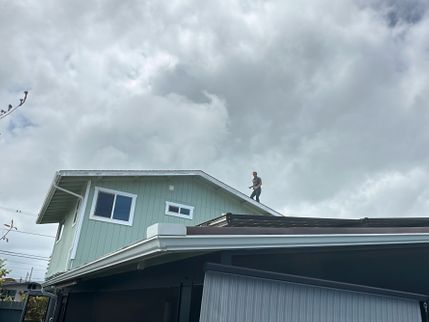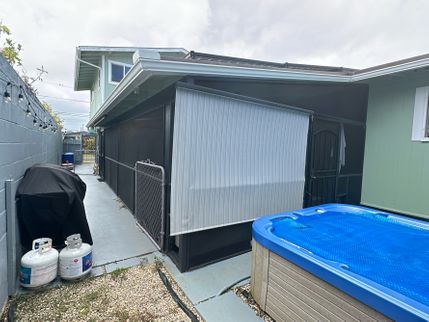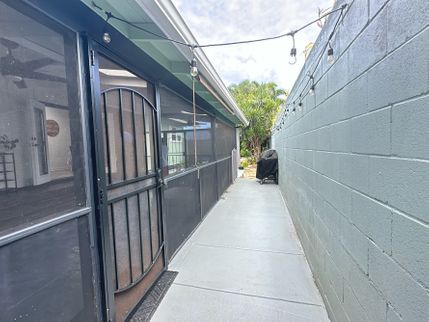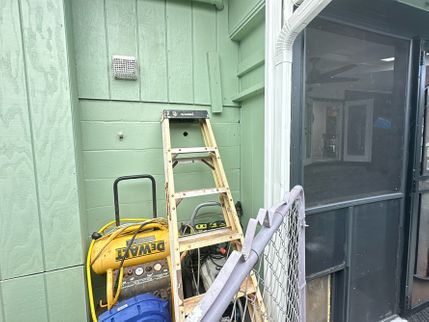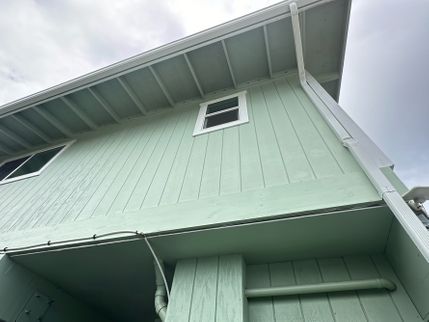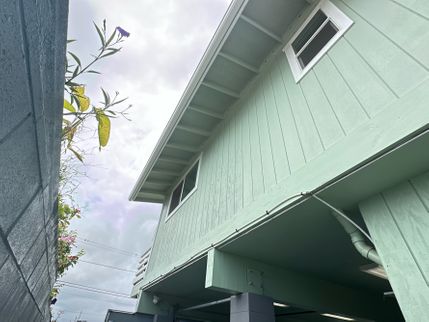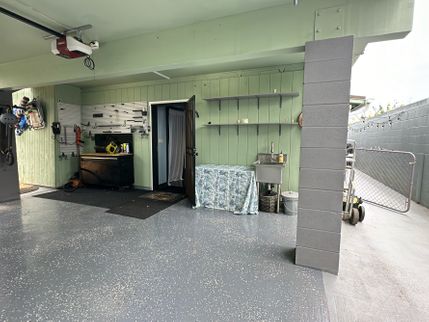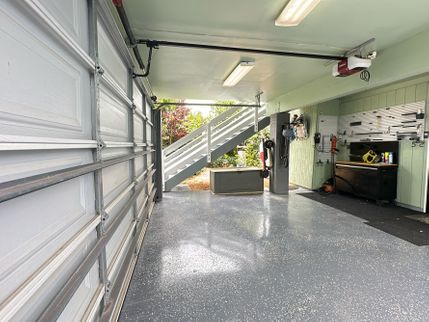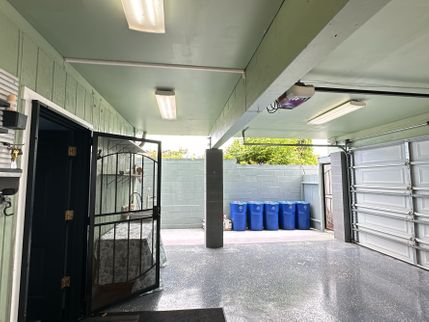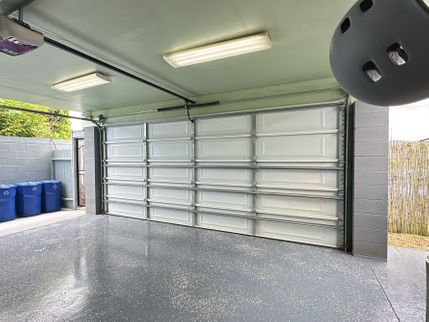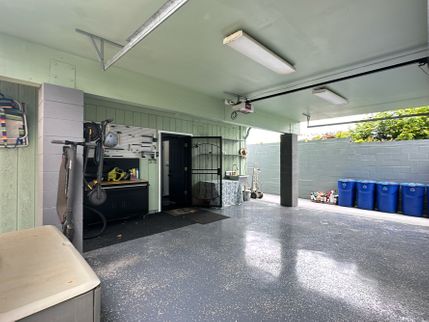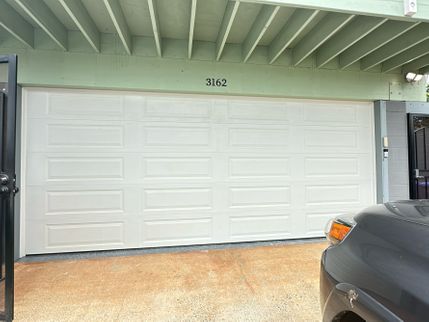Dear Vito and Carmela Andolini
Per your request, KHIS performed a home inspection at the residence located at 123 Hawaiiana St, Kilauea, HI 96761
This report is provided by CONTRACT AGREEMENT for the client whose name appears on the report and is the property of Kauai Home Inspection Services (KHIS) for the exclusive use of the client for the acquisition of the property. The terms of the use of the report are detailed in the CONTRACT AGREEMENT. Unauthorized use of the report by any 3rd party for the acquisition of the property without the written consent of KHIS is strictly prohibited. Any 3rd party who uses this report does so at their own risk.
The Inspection:
The inspection of the systems and components of the home or structure (when present) was performed in accordance with the InterNACHI Residential Standards of Practice. A link to the Standards of Practice was provided to you prior to the inspection in the inspection agreement. Reviewing this document will help you understand the scope and limitations of the inspection. KHIS Standards of Practice
A home inspection is a non-invasive, visual examination of the accessible areas of a residential property, performed for a fee, which is designed to identify defects within specific systems and components defined by these Standards that are both observed and deemed material by the inspector. A material defect is a specific issue with a system or component of a residential property that may have a significant, adverse impact on the value of the property, or that poses an unreasonable risk to people. The intent of the home inspection is not to reveal every issue that exists or ever could exist, but only to document those material defects observed on the date of the inspection.
The inspector will also make recommendations regarding common safety issues, components that need routine maintenance or repairs, or components that could be upgraded to current building or safety standards. These observations should not be construed as a comprehensive or itemized list and there may be additional items that were not noted in the report. A photo of a defect or damage does not mean that the issue was limited to that area only but may be a representation of a condition that is in other locations.
Mechanical/plumbing/electrical components are tested in 1 mode only for basic functionality. The inspection is not an exhaustive evaluation of any component or system. Occasionally the testing of operable components reveals that the component was defective or damaged. KHIS is not responsible to repair or replace components that were revealed to be damaged as a result of using normal testing procedures.
Many municipalities, including Kauai County, have historically failed to strictly enforce their own building codes in place at the time of construction, and this remains true today. It is common for homes not to meet current building codes, as codes evolve over time. A standard home inspection does not verify compliance with the building codes in effect at the time of construction. Instead, it focuses on identifying visible material defects and safety concerns. Noncompliance with current or past building codes does not necessarily constitute a material defect. However, your inspector may recommend updating certain components to align with current building or safety standards. Some repairs or renovations may have required building permits and the expertise of licensed professionals, including specialty trades, architects or engineers. The inspection does not confirm whether necessary permits were obtained for past work or if any repairs or renovations adhered to required standards or conditions. For questions regarding code compliance and building permits, it is advisable to consult the local authority having jurisdiction.
It is important to note that Kauai Home Inspection Services (KHIS) does not hold professional licenses in any building trade and primarily conducts visual inspections. KHIS does not perform tests, calculations, invasive investigations, or use specialized tools to detect concealed or latent defects. As such, KHIS does not assume the role or responsibilities of a licensed contractor or building professional.
In accordance with the terms of the contract, components or systems identified as having defects, damages, or safety concerns should be thoroughly reviewed during your inspection contingency period by qualified, licensed specialists or other professionals experienced in their respective fields. These experts may discover additional issues and may recommend further repairs or upgrades that could influence your valuation of the property. Engaging qualified specialists helps ensure appropriate resolution of any identified or potential issues. We strongly recommend obtaining all available documentation, including receipts, user manuals, warranties, and permits, for any past or future work performed on the property.
Prior To Closing:
You should review the condition of the property prior to closing. Conditions may change from this inspection date to the closing date.
- Operate all mechanical, electrical and plumbing fixtures, all appliances, open and close all windows and doors, etc.
- Furnishings, personal belongings or stored items were not moved or disturbed during the inspection and areas that were not visible or inaccessible should be reviewed for defects or damages. Any components or areas that were not visible or accessible are expressly excluded from this inspection and report.
- Review any areas that were noted as having prior or current moisture problems or leaks.
Home Maintenance:
Most maintenance or repair recommendations are very common and are typical of Hawaii homeownership. All homes have defects and/or components that need or will need maintenance and repairs. The age, maintenance, climate and weather conditions, quality and type of materials, etc. can all affect the condition and value of the home. Extreme weather conditions or natural disasters can overwhelm or cause damage to components that otherwise function normally. You should monitor the performance of the grade and drainage, roof, rain gutters etc. during adverse weather.
The Inspection Report:
The inspection and accompanying report are based on the inspector's observations at the time of the inspection, providing a snapshot of the property’s condition at that moment. This report is not a prediction of future conditions or events, nor does it serve as a warranty or guarantee for any component. While our inspection process aims to reduce the risk associated with purchasing a home, it cannot eliminate that risk entirely, nor can we assume it on your behalf. Even the most thorough inspection may not uncover every condition you might consider significant to ownership. Although we strive to proofread carefully and deliver accurate results, occasional typographical errors or omissions may occur. If you find any part of the report unclear, confusing, or incomplete due to such errors, please contact me immediately for clarification or correction. Should we discover an error after sending the report, we will promptly notify you and provide the necessary correction.
Defect or Damage Designations That May Appear In The Report:
SIGNIFICANT CONCERNS: Components or systems that require thorough evaluation by qualified professionals due to potentially significant or concealed defects or damages, safety issues or other concerns that may require crucial or costly repairs or replacement.
IMPORTANT EVALUATION OR REPAIRS: Components with common defects, damages, or safety concerns that should be reviewed by qualified professionals and may require repairs or replacement in the near future. In many cases, the evaluation and repair of these items are straightforward tasks for experienced professionals to address.
RECOMMENDED IMPROVEMENTS OR UPDATES: Components that may not have been required when the home was built or are obsolete that should be considered for improvements or updates for safety reasons.
MAINTENANCE OR REPAIR ITEMS: Components that should be maintained or repaired to function as they were intended or to prevent (further) damage that could require more extensive repairs.
HOMEOWNERS ASSOCIATION: Defects or damages noticed during the inspection of a condo or townhome that are likely in a common area that should be brought to the attention of the Homeowner Association.
Create Request List:
At the left side of the online version of the report, there is a button to create a list of requested repairs or monetary credits.
Summary
SUMMARY DETAILS:
✅The purpose of the inspection and report is to identify material defects. ✅A material defect is a specific issue with a system or component of a property that may have a significant, adverse impact on the value of the property, or that poses an unreasonable risk to people. ✅Material defects discovered during the inspection are summarized below. ✅The report may also included recommended updates or improvements, and components that have minor damage or need routine maintenance and repairs. ✅The summary items reflect the opinions of the inspector and should have prompt evaluation or repair. ✅This summary is not a complete listing of the findings in the report. Please review the entire report. ✅Many of the narrative comments in the summary are accompanied by photos in the body of the report to help clarify the issues. Lack of information in the summary for any given component only means that, in my opinion, there was nothing in the body of the report that warranted posting it to the summary.Front of Home:
- ID-1 Inspection Details:
The inspector designates a side of the structure as the front. Directional references in comments are made as if one were facing the front from the exterior.
SIGNIFICANT CONCERNS
- P-2 🚿PLUMBING:
WATER DRAINS:
The following observations were noted:
- Corrosion and possible leaks at the cast iron drain lines below the kitchen. The area had a sewage like odor.
- Significant corrosion and damage at cast iron drain line at the master bathroom area.
RECOMMENDATIONS: evaluation and repairs or replacement of damaged components as determined necessary.
BY WHOM: a qualified and licensed plumbing contractor.
IMPORTANT EVALUATION OR REPAIRS
- BS-1 🏘️BUILDING STRUCTURE:
ROOF COVERING:
The following observations were noted:
- Electrical mast roof penetrations did not appear to be adequately sealed. No leaks detected at the time of inspection.
- Photovoltaic roof penetration did not appear to be adequately sealed. No leaks detected at the time of inspection. Photo location at left side of main home.
- Significant corrosion at the solar powered exhaust fan.
- The solar powered exhaust fans were installed over the roof material and sealant was applied. The sealant was beginning to crack. If the fans cannot be installed under the roof materials, the sealant should be periodically maintained and repaired to prevent roof leaks.
RECOMMENDATIONS: evaluation and repairs or replacement as determined necessary.
BY WHOM: a licensed roofing contractor or other qualified professional in the field experienced in this kind of work.
- BS-2 🏘️BUILDING STRUCTURE:
EXTERIOR WALLS & EAVES:
The following observations were noted:
- Possible moisture entry point at the right rear of ADU.
RECOMMENDATIONS: evaluation and repairs or replacement as determined necessary.
BY WHOM: a qualified exterior wall contractor, experienced in this kind of work
- BS-3 🏘️BUILDING STRUCTURE:
FOUNDATION:
The following observations were noted:
- Moisture at foundation below the kitchen area. Sewage like odor observed. Determine the moisture source and repair as needed.
- Moisture damage and possible termite damage at subfloor below hall bathroom. Normal moisture levels at the time of inspection and no indications of a current plumbing leak.
RECOMMENDATIONS: evaluation and repairs as determined necessary.
BY WHOM: a qualified foundation contractor or other professional in the field, experienced in this kind of work.
- BS-4 🏘️BUILDING STRUCTURE:
VENTILATION:
The following observations were noted:
- Significant corrosion at solar power roof vent.
- Significant corrosion to solar powered exhaust fan.
- Range hood exhaust ducting at the ADU attic is typically required to be rigid and smooth ducting with a limited number of bends or angles. Acquire the manual for the hood and repair as needed per the hood manufacturer specifications or per local requirements.
RECOMMENDATIONS: evaluation and repairs or replacement as determined necessary.
BY WHOM: a qualified contractor or other professional in the field experienced in this kind of work.
- A-1 🍴APPLIANCES:
COOKING APPLIANCES:
The following observations were noted:
- Install anti-tip device at ADU range to prevent injuries.
- Range hood exhaust ducting at the ADU attic is typically required to be rigid and smooth ducting with a limited number of bends or angles. Recommend checking the manufacturer installation specifications for the hood and repair as needed.
RECOMMENDATIONS: evaluation and repairs as determined necessary.
BY WHOM: a qualified appliance repair technician or other professional in the field experienced in this kind of work.
- E-1 ⚡ELECTRICAL:
PHOTOVOLTAIC:
The following observations were noted:
- There was a scratch and possible damage at the photovoltaic panels at the ADU.
RECOMMENDATIONS: evaluation and repairs as determined necessary.
BY WHOM: a qualified photovoltaic contractor or other professional in the field experienced in this kind of work.
- E-2 ⚡ELECTRICAL:
SUB PANEL 2:
The following observations were noted:
- There was no power to the outlet and the GFCI breaker did not trip when tested and may be defective.
RECOMMENDATIONS: evaluation and repairs or replacement as determined necessary.
BY WHOM: a qualified and licensed electrical contractor.
- E-3 ⚡ELECTRICAL:
SUB PANEL 4:
The following observations were noted:
- Screws at the panel cover should have a blunt head to prevent damage to the wiring.
- The screw at the middle right hand side of the panel was not reinstalled because it was close to the wiring.
The RECOMMENDATIONS: evaluation and repairs or replacement as determined necessary.
BY WHOM: a qualified contractor or other professional in the field experienced in this kind of work.
- E-4 ⚡ELECTRICAL:
ELECTRICAL DISTRIBUTION:
The following observations were noted:
- Unused or abandoned electrical wiring should be removed or properly terminated in junction boxes. Photo location at storage room at the front of the home.
- Outlet tester indicates the outlet at the main home kitchen was not grounded.
- Outlet tester indicates several outlets at the main home living room were not grounded.
- Loose outlet at main home living room.
- Missing outlet cover plate at main home living room.
- Loose junction box at main home master bathroom.
- Outlet tester indicates the outlet at the main home master bedroom was not grounded.
- Cracked or damaged light switch at the hallway.
- Junction box cover plate was not installed at the main home attic.
- Unused or abandoned electrical wiring at the main home attic should be removed or properly terminated in junction boxes.
- Smoke detectors not present at the ADU.
RECOMMENDATIONS: evaluation and repairs or replacement as determined necessary.
BY WHOM: a qualified and licensed electrical contractor.
- P-1 🚿PLUMBING:
WATER SUPPLY:
The following observations were noted:
- Galvanized iron and copper supply pipes that are connected without the proper fittings results in galvanic corrosion. Photo location below the main home master bathroom.
- Loose or unsupported PEX water lines. PEX water lines are typically required to be braced or supported every 32".
RECOMMENDATIONS: evaluation and repairs as determined necessary.
BY WHOM: a qualified and licensed plumbing contractor.
- P-3 🚿PLUMBING:
WATER DRAINS:
The following observations were noted:
- The main home master bathroom sink accumulates water faster than it drains when the faucet is used.
RECOMMENDATIONS: evaluation and repairs or replacement of damaged components as determined necessary.
BY WHOM: a qualified and licensed plumbing contractor.
- P-4 🚿PLUMBING:
PLUMBING FIXTURES:
The following observations were noted:
- Toilet was not secure to floor at the hallway bathroom. Toilets should have little to no movement at floors to prevent damage to wax ring and to prevent leaking.
RECOMMENDATIONS: evaluation and repairs or replacement of damaged components as determined necessary.
BY WHOM: a qualified and licensed plumbing contractor.
- P-5 🚿PLUMBING:
WATER HEATING:
The following observations were noted:
- Hot water temperature at home - Water temperature over 125 degrees. Decrease water temperature to prevent injuries. Recommended residential water temperature guide. https://www.energyguide.com/library/EnergyLibraryTopic.asp?bid=austin&prd=10&TID=17322&SubjectID=8386.
- Water temperature over 125F.
RECOMMENDATIONS: evaluation and adjustment or improvements as determined necessary.
BY WHOM: a qualified and licensed plumbing contractor.
- FS-1 🛢️FUEL SUPPLY:
FUEL SUPPLY:
The following observations were noted:
- Fuel tanks, including portable fuel tanks should be at least 5 feet from windows and doors. The fuel tank should be relocated.
RECOMMENDATIONS: relocation as determined necessary.
BY WHOM: a qualified contractor or other professional in the field experienced in this kind of work.
Full Report
Inspection Details
Inspection Details
✅: Type of Building
Building type: Single family home with detached ADU.
✅: Occupancy:
- Occupied and furnished.
- Furniture, personal belongings or stored items restricted access or visibility at some areas or and some components may not have been inspected or tested for proper function. Areas or components that were inaccessible or not visible should be reviewed for defects or damages.
✅: Weather during the inspection:
- Partly cloudy.
✅: Inspection Attendance:
- Client's realtor or their representative.
- Listing agent or their representative.
The inspector designates a side of the structure as the front. Directional references in comments are made as if one were facing the front from the exterior.
🌴EXTERIOR COMPONENTS
🛤️🔎
Grounds: ✅
DRIVEWAYS AND WALKWAYS WERE FUNCTIONAL OR SERVICEABLE AT THE TIME OF INSPECTION UNLESS OTHERWISE NOTED.
DRIVEWAY MATERIALS
- Concrete.
🌴🔎
Landscaping & Vegetation: ✅
VEGETATION (WHEN PRESENT) ADJACENT TO THE HOME WAS ADEQUATELY MAINTAINED UNLESS OTHERWISE NOTED.
Trees and other vegetation near the structure should be maintained on a regular basis to avoid contact with the home to help prevent clogged gutters and damage to the structure and roof.
LANDSCAPING AND VEGETATION:
The following observations were noted:
- Landscaping or vegetation was near or in contact with the home.
RECOMMENDATIONS: maintenance as deemed necessary.
BY WHOM: appropriately qualified parties.
▥🔎
Retaining Walls, Fences or Stairs: ✅
- Fences around the property are generally excluded from the Standard Home Inspection. However, some information may be provided as a courtesy and points of connection to the home itself are inspected. Fences can represent safety issues when they become damaged, derelict or otherwise compromised. Wood rot, corrosion and cracks or damage at concrete components is common. It also typically cannot be determined who actually owns the fence and communication with neighbors is often necessary to accomplish repairs and/or replacement. Specific evaluation of the fences on the property may be warranted.
🏘️BUILDING STRUCTURE
🛖🔎
Roof: ✅
THE ROOF WAS FUNCTIONAL OR SERVICEABLE AT THE TIME OF INSPECTION UNLESS OTHERWISE NOTED.
Inspection of roofing, flashing, skylights etc. is a non-invasive visual inspection performed by walking on the roof when possible. We inspect and document visible defects. Determining the remaining lifespan of the roof is outside the scope of the inspection. The inspection of roofs does not include the use of specialized tools or testing to detect or diagnose potential leaks or other problems. Any observed indications of leaks are noted in the report. Any leaks observed after the inspection cannot be considered an oversight by the inspector as it is impossible to detect if and when a leak will occur, regardless of the age and condition. We make every effort to perform a thorough inspection using current inspection guidelines however if we cannot physically walk the roof due to safety concerns or because the roof may be damaged by walking on it, there may be issues or problems that were not detected. If you desire a comprehensive and conclusive evaluation of the roof, contact a qualified roofing contractor. The roof should be inspected bi-annually to ensure vents, flashing, skylights, roof penetrations and fasteners remain properly secured and sealed and that no damages have occurred.
ROOF INSPECTION METHOD
- Roof was walked.
ROOF MATERIALS
- Fiberglass/asphalt shingles.
- Rolled asphalt roofing.
- Corrugated metal.
ROOF STRUCTURE
- Conventional wood framing.
- Engineered wood trusses.
- Vaulted ceilings with exposed wood framing. Drywall at flat ceilings.
ROOF COVERING:
The following observations were noted:
- Electrical mast roof penetrations did not appear to be adequately sealed. No leaks detected at the time of inspection.
- Photovoltaic roof penetration did not appear to be adequately sealed. No leaks detected at the time of inspection. Photo location at left side of main home.
- Significant corrosion at the solar powered exhaust fan.
- The solar powered exhaust fans were installed over the roof material and sealant was applied. The sealant was beginning to crack. If the fans cannot be installed under the roof materials, the sealant should be periodically maintained and repaired to prevent roof leaks.
RECOMMENDATIONS: evaluation and repairs or replacement as determined necessary.
BY WHOM: a licensed roofing contractor or other qualified professional in the field experienced in this kind of work.
☔🔎
Rain Gutter and Homesite Drainage: ✅
THE RAIN GUTTERS (WHEN PRESENT) AND DRAINAGE WERE FUNCTIONAL OR SERVICEABLE AT THE TIME OF INSPECTION UNLESS OTHERWISE NOTED.
Rain gutters are not required in Hawaii, but they can be helpful as part of a drainage plan to direct water away from structures. It's important to regularly maintain gutters and downspouts to keep them clean and sealed to avoid damage to the gutters, eaves and roof. Avoid contact between trees, landscaping, and the structure. Extreme weather conditions or natural disasters can overwhelm or cause damage to components that otherwise function normally under normal conditions. You should monitor the performance of the grade and drainage, roof, rain gutters etc. during adverse weather. Rain gutter issues may become apparent during rainy weather that were not able to be observed during inspection.
RAIN GUTTER MATERIALS
- Aluminum.
DRAINAGE
- The grade was sloped toward the front of the home and was level/flat or nearly so elsewhere. Water may accumulate around the home during heavy rain. There were no indications of moisture damage to the home unless otherwise noted. The grade around the structure should be evaluated during heavy rain and a drainage system installed as needed.
MORE INFO
- Installation of rain gutters at the entire perimeter of the home will help with proper drainage. A drainage system should be designed to direct water from the grade and roof around the structure to prevent water accumulation against or under the home.
- A drainage system or plan may include slopes or swales on the ground around the home, rain gutters and downspouts, and/or drains with drainage pipes to direct water from the grade and roof around the structure to prevent water accumulation against or under the home. Rain gutters, downspouts, and any drain lines require regularly scheduled maintenance and cleaning for proper function. A properly functioning drainage system prolongs the life of exterior components and helps prevent costly repairs.
GUTTER AND DOWNSPOUTS:
The following observations were noted:
- Rain gutters that discharge to a lower roof can cause premature wear to asphalt shingles and other materials.
RECOMMENDATIONS: evaluation and maintenance or repairs as determined necessary.
BY WHOM: a qualified gutter installation contractor or other professional in the field experienced in this kind of work.
HOMESITE DRAINAGE:
The following observations were noted:
- The grade or drainage was sloped towards the front o home. Moisture may accumulate near the foundation,
- The grade was level/flat or nearly so at most other locations
RECOMMENDATIONS: evaluation and maintenance or repairs as determined necessary.
BY WHOM: a qualified drainage contractor or other professional in the field experienced in this kind of work.
🧱🔎
Exterior Walls and Eaves: ✅
THE EXTERIOR WALLS AND EAVES WERE FUNCTIONAL OR SERVICEABLE AT THE TIME OF INSPECTION UNLESS OTHERWISE NOTED.
Identifying the brand or specific composition of the exterior wall material is typically not possible without invasive examination. The inspector identifies the exterior wall covering type by how the material looks, sounds and feels.
Maintenance of exterior wall coverings and eaves is important in our tropical climate. Maintain painted surfaces to preserve the material and prevent damages. Keep cracks, gaps and wall penetrations sealed to prevent moisture and pest intrusion. Maintain trees, landscaping and vegetation to avoid contact with the structure.
WALL CONSTRUCTION TYPE
- Double and single wall construction. Double wall construction means that there is wood or metal wall framing members, typically with a layer of material on both the interior and exterior sides of the framing members. Single wall construction was common in homes in Hawaii built prior to the 1970's. Single wall construction means that the wall structure consists of a single pieces of 1" thick vertical tongue and groove wood. Sometimes layers of other types of materials are applied at the interior or exterior over the original wood structure.
MORE INFO
- The clearance of the exterior wall material to the grade was less than 6" and has or can allow moisture to damage the wall material. If the grade cannot be altered to create 6" or more of space, the exterior wall material should be well maintained to prevent moisture intrusion and damage.
- The clearance of the exterior wall material to the roof material was less than 2" and has or can allow moisture to damage the wall material. If the wall material is too close to the roof material, the inspector may not be able to tell if flashing is present or properly installed. Creating clearance of 2' between the exterior wall material and roof with the proper flashing installed helps prevent damage and leaks.
EXTERIOR WALLS & EAVES:
The following observations were noted:
- Possible moisture entry point at the right rear of ADU.
RECOMMENDATIONS: evaluation and repairs or replacement as determined necessary.
BY WHOM: a qualified exterior wall contractor, experienced in this kind of work
EXTERIOR WALLS & EAVES:
The following observations were noted:
- Dirt was in contact with the siding at the front of the home next to the carport.
- Louvered vents were missing at the eave blocks at the right rear of the home.
- The louvered vents at the eave blocks at the right rear of the home were painted over and may inhibit proper ventilation of the roof or attic.
- The clearance of the siding above the roof material was less than 2" which allows moisture to be absorbed and causes damage. No significant damage observed at the time of inspection. Photo location at rear of ADU.
RECOMMENDATIONS: evaluation and maintenance or repairs as determined necessary.
BY WHOM: a qualified contractor or other professional in the field experienced in this kind of work.
⏹️🔎
Foundation: ✅
THE FOUNDATION WAS INSPECTED AND WAS FUNCTIONAL OR SERVICEABLE AT THE TIME OF INSPECTED UNLESS OTHERWISE NOTED.
The inspection of foundations is a visual inspection and no specialized tools or testing was used to detect or diagnose foundation issues. The inspector will document observations that may indicate serious settling or other structural issues. Remove or maintain vegetation near or in contact with exterior walls and foundation components because it can cause and may conceal damages or defects.
FOUNDATION MATERIALS
- Concrete slab. Inspected from the perimeter.
- Raised foundation.
- Concrete piers.
- Wood posts.
- CMU walls.
- Floor system: 4X wood beams and 2 X wood joist.
- Hardwood flooring over wood joists.
FOUNDATION:
The following observations were noted:
- Moisture at foundation below the kitchen area. Sewage like odor observed. Determine the moisture source and repair as needed.
- Moisture damage and possible termite damage at subfloor below hall bathroom. Normal moisture levels at the time of inspection and no indications of a current plumbing leak.
RECOMMENDATIONS: evaluation and repairs as determined necessary.
BY WHOM: a qualified foundation contractor or other professional in the field, experienced in this kind of work.
FOUNDATION:
The following observations were noted:
- Minor to moderate corrosion at thin metal plates between concrete piers and wood components. Metal plates were installed at homes of this era to deter insects and rot however they are often deteriorated and appear to be of little value.
RECOMMENDATIONS: evaluation and maintenance or repairs as determined necessary.
BY WHOM: a qualified foundation contractor or other professional in the field, experienced in this kind of work.
🍹1🔎
Deck/Lanai: ✅
DECKS/LANAIS WERE FUNCTIONAL OR SERVICEABLE AT THE TIME OF INSPECTION UNLESS OTHERWISE NOTED.
Due to our tropical climate, decks and lanais should be periodically reviewed for damages. Regular maintenance and repairs are typically required to prolong the life of the various components and to help prevent safety issues. Handrail components should have little to no movement.
DECK/LANAI LOCATION(S)
- Left side of ADU.
DECK/LANAI SURFACE MATERIAL(S)
- Waterproofing over plywood.
DECK/LANAI HANDRAIL MATERIAL(S)
- Wood.
DECK/LANAI:
The following observations were noted:
- The graspable handrail installed should return to the post to prevent a bag or loose clothing from getting caught.
RECOMMENDATIONS: evaluation and updates or repairs as determined necessary.
BY WHOM: a qualified deck installation contractor or other professional in the field experienced in this kind of work.
🍹2🔎
🏛️🔎
OTHER STRUCTURES:
The following observations were noted:
- The exterior walls at the shed were near or touching the grade. The wood floor system and siding at the rear of the structure was damaged.
RECOMMENDATIONS: evaluation and maintenance or repairs as determined necessary.
BY WHOM: a qualified contractor or other professional in the field experienced in this kind of work.
🚗🔎
Garage: ✅
GARAGES OR CARPORTS WERE INSPECTED AND WERE FUNCTIONAL OR SERVICEABLE UNLESS OTHERWISE NOTED.
Remote controls used to operate motorized garage doors that are typically kept in vehicles are tested when we see them. If there is a motorized garage door and testing of the remote controls is not mentioned in the report, we recommend checking with the seller to determine they have them and to test them to make sure they work properly.
GARAGE/CARPORT
- Attached carport.
- Sectional door with motorized opener and safety sensors were tested and functioned normally.
🪟🔎
Windows and Doors: ✅
ACCESSIBLE DOORS AND WINDOWS WERE FUNCTIONAL OR SERVICEABLE AT THE TIME OF INSPECTION UNLESS OTHERWISE NOTED.
Corrosion or oxidation at metal hardware is common in our tropical climate. Lubricate door and window hardware to improve operation and prolong the life of moving parts. Changing weather conditions can sometimes affect the operation of doors and windows.
WINDOW TYPE(S)
- Fixed pane
- Jalousie
- Single hung
- Sliding
MORE INFO
- Double pane windows that are hazy, fogged or have visible condensation often means the seal between the 2 panes of glass has failed. The amount of distortion can vary from day to day and be affected by lighting, weather conditions and other factors. In our climate windows can sometimes develop a haze similar to a double pane window with a damaged seal. The window may simply need to be cleaned. The inspector notes any windows that appear to have damaged seals however you should contact a professional glazier to make the final determination and to seek their opinion on other double pane windows that appeared normal at the time of inspection.
WINDOWS:
The following observations were noted:
- Damaged window screen at the Den bathroom.
- Condensation or fogged glass at double pane window at the master bedroom. Typically indicates a broken seal between the panes.
- Missing jalousie window pane or damaged hardware at the hallway bathroom.
- Single hung window locks did not operate smoothly at the master bedroom.
RECOMMENDATIONS: evaluation and maintenance or repairs as determined necessary..
BY WHOM: a qualified contractor or other professional in the field experienced in this kind of work.
DOORS:
The following observations were noted:
- Door(s) rub at jamb at main home master bedroom.
- Pocket door lock(s) did not operate properly at main home master bathroom.
- Improperly installed pocket door hardware at ADU bathroom.
- Loose or damaged door handle hardware at ADU.
- Damage screen at security screen door at ADU.
RECOMMENDATIONS: evaluation and maintenance or repairs as determined necessary.
BY WHOM: appropriately qualified parties.
🪑🔎
Interior: ✅
THE FLOORS, WALLS, CEILINGS, CABINETS, COUNTERTOPS AND BATHTUB AND SHOWER WALLS WERE INSPECTED AND WERE FUNCTIONAL OR SERVICEABLE UNLESS OTHERWISE NOTED.
Maintain grout or sealant at tile floors, countertops and backsplashes, and at bathtub and shower walls to prevent moisture intrusion.
FLOOR MATERIALS
- Natural stone
- Porcelain or ceramic tile
- Floating wood or vinyl laminate
INTERIOR WALL MATERIALS
- Wood single wall construction
- Drywall
CEILING MATERIALS
- Vaulted open beam with tongue and groove wood. drywall at flat ceilings.
FLOORS:
The following observations were noted:
- Gaps or defects observed at floors in several locations throughout the ADU.
RECOMMENDATIONS: evaluation and maintenance or repairs as determined necessary.
BY WHOM: appropriately qualified parties.
🍽️🔎
Cabinet or Shower Walls Photos: 📷
The hinges at cabinet doors may require periodic adjustment to maintain proper function. Periodically maintain or replace the sealant or grout at countertops, backsplashes, and shower and bath walls to prevent moisture intrusion.
CABINETS AND COUNTERTOPS:
The following observations were noted:
- Hallway bathroom cabinet doors were misaligned or rubbed against the cabinet.
- Apply sealant at the hallway bathroom to prevent moisture from getting between the wall and cabinet.
- Cracked grout or missing/damaged sealant at the master bathroom.
- Minor damage to cabinets.
RECOMMENDATIONS: evaluation and repairs as determined necessary.
BY WHOM: a qualified contractor or other professional in the field experienced in this kind of work.
BATHTUB AND SHOWER WALLS OR FLOORS:
The following observations were noted:
- Cracked grout missing sealant at hallway bathroom shower/bath walls.
- The tub spout was loose or damaged.
RECOMMENDATIONS: evaluation and maintenance or repairs as determined necessary.
BY WHOM: appropriately qualified parties.
🌪️🔎
Attic and Ventilation: ✅
THE ATTIC AND VENTILATION (WHEN PRESENT) WERE INSPECTED AND WERE FUNCTIONAL OR SERVICEABLE UNLESS OTHERWISE NOTED.
Insulation
- Insulation was not present at the main home and is not required in Kaua'i. The lack of insulation is not considered a defect in Kaua'i.
- Fiberglass batt insulation in joist bays at the ADU.
- Insulation was not disturbed during the inspection. Defects may exist that were concealed.
Hurricane Hardware
- Hurricane hardware was observed at roof framing to wall plate connections at the main home.
- Any installed hurricane hardware was not readily visible due to installed insulation at the ADU.
Attic or Roof Ventilation
- Vented eave blocks
- Solar powered roof vents
Bathroom and Laundry Room Ventilation
- Bathroom exhaust fan(s).
- Common practice in Hawaii to vent bathroom exhaust fans into the attic. Exhaust fans are not required when a bathroom has a window, however bathrooms with exhaust that are not vented to the exterior can discharge moisture into the attic which can promote mold growth. There was no visual indications of moisture damage or mold like substances adjacent to the exhaust fan(s) at the time of inspection, however venting the exhaust fan(s) to the exterior should be considered.
VENTILATION:
The following observations were noted:
- Minor to moderate corrosion observed at solar powered roof vent(s). Photo location at rear of main home.
- Bathroom exhaust fan(s) were not vented to the exterior at the main home.
- Bathroom exhaust fan(s) were not vented to the exterior at the ADU.
RECOMMENDATIONS: evaluation and maintenance or repairs as determined necessary.
BY WHOM: a qualified contractor or other professional in the field experienced in this kind of work.
VENTILATION:
The following observations were noted:
- Significant corrosion at solar power roof vent.
- Significant corrosion to solar powered exhaust fan.
- Range hood exhaust ducting at the ADU attic is typically required to be rigid and smooth ducting with a limited number of bends or angles. Acquire the manual for the hood and repair as needed per the hood manufacturer specifications or per local requirements.
RECOMMENDATIONS: evaluation and repairs or replacement as determined necessary.
BY WHOM: a qualified contractor or other professional in the field experienced in this kind of work.
🍴APPLIANCES
🍴1🔎
Appliances: ✅
Inspection of appliances is outside the scope of a home inspection and the evaluation of appliances is performed as a courtesy. Evaluation of appliances is not comprehensive and are evaluated in one mode only to determine basic functionality. Appliances are not moved. Determining the temperature calibration, functionality of timers, effectiveness, efficiency, overall adequacy or predicting the remaining lifespan is outside the scope of this inspection. The operation of appliance controls is assumed to be relatively straight forward. Controls that require an unconventional method or combination of turns or steps to achieve functionality may be noted as not functional or not functioning properly.
Counter-top microwave ovens, wine refrigerators, warming drawers, portable dishwashers, trash compactors and central vacuums are not tested or inspected.
We recommend that you test the appliances and check the area around the appliances at your final walkthrough or prior to closing to ensure they are functional and for defects or damages that were not observed or visible at the time of inspection. Test and monitor the appliances for proper operation the first couple times they are used. Appliances may perform differently with actual usage verses brief testing during the inspection.
Refrigerators are evaluated by opening the doors and observing if the unit was cold and appeared to be functional.
REFRIGERATOR OBSERVATIONS
- Refrigerator appeared to function normally unless otherwise noted.
- Ice and water dispenser appeared to functioned normally.
Ranges, cooking exhaust fans and microwave are turned on for a short period of time to determine functionality. Thermostats, timers, clocks and other specialized cooking functions and features are not tested during this inspection.
Check manufacturer requirements for anti-tip devices at freestanding ranges, clearance requirements to combustible materials above, behind and at the sides of ranges and clearance requirements of microwave ovens and exhaust hoods above cooking surfaces.
COOKING APPLIANCE OBSERVATIONS
- Cooking appliances appeared to function normally unless otherwise noted.
- Antitip brackets are metal devices designed to prevent freestanding ranges from tipping. They are normally attached to a rear leg of the range or screwed into the wall behind the range, and are included in all installation kits. A unit that is not equipped with these its devices may tip over if enough weight is applied to open door, such as that from a large Thanksgiving turkey, or even a small child. A falling range can crush, scald, or burn anyone caught beneath.
- Built in hood exhaust fan and lights appeared to operate normally.
Dishwasher and disposal are tested for basic operation.
DISHWASHER AND DISPOSAL OBSERVATIONS
- Some newer dishwasher models have a built in high loop but this is typically not visible or verified during a home inspection. Recommend checking the specifications of this dishwasher model and installing an air gap or high loop between the dishwasher and the garbage disposal or drain lines to prevent wastewater from entering the dishwasher and possibly back into the potable water system if a high loop is not included with this model.
Laundry units are tested for basic operation.
Water supply line valves serving washing machines are not operated--as they may be subject to leak if turned.
Dryer exhaust ducting should be installed to current building requirements or appliance manufacturer specifications.
Check manufacturer requirements for dryer duct materials and materials.
LAUNDRY UNIT(S) OBSERVATIONS
- Recommend cleaning the dryer duct and vent prior to closing and annually thereafter.
- Laundry units appeared to function normally unless otherwise noted.
- Electric washer and dryer.
- Stacked washer/dryer combination unit.
COOKING APPLIANCES:
The following observations were noted:
- Main home oven had missing bulbs or the lights did not function properly.
- Corrosion at main home oven.
RECOMMENDATIONS: evaluation and repairs as determined necessary.
BY WHOM: a qualified appliance repair technician or other professional in the field experienced in this kind of work.
COOKING APPLIANCES:
The following observations were noted:
- Install anti-tip device at ADU range to prevent injuries.
- Range hood exhaust ducting at the ADU attic is typically required to be rigid and smooth ducting with a limited number of bends or angles. Recommend checking the manufacturer installation specifications for the hood and repair as needed.
RECOMMENDATIONS: evaluation and repairs as determined necessary.
BY WHOM: a qualified appliance repair technician or other professional in the field experienced in this kind of work.
🍴2🔎
DISHWASHER:
The following observations were noted:
- No air gap or high loop at main home dishwasher drain line. Refer to owners manual to determine if installation of an air gap or high loop is needed.
- No air gap or high loop at ADU dishwasher drain line. Refer to owners manual to determine if installation of an air gap or high loop is needed.
RECOMMENDATIONS: evaluation and maintenance or repairs as determined necessary.
BY WHOM: a qualified appliance repair technician or other professional in the field experienced in this kind of work.
⚡ELECTRICAL
⚡🔎
Electrical Inspection: ✅
THE ACCESSIBLE ELECTRICAL SERVICE COMPONENTS WERE FUNCTIONAL OR SERVICEABLE AT THE TIME OF INSPECTION UNLESS OTHERWISE NOTED.
The adequacy of the electrical service rating and the accuracy of breaker labeling is not determined. The primary power system components were inspected. Secondary power systems (photovoltaic power or other), low voltage components, alarm systems, and cable or internet components are outside the scope of a home inspection and are not inspected. GFCI and AFCI breakers should be tested monthly when present.
Inspection of the electrical service is a non-invasive visual inspection. The dead front covers on breaker panels are removed to inspect for proper installation or damages. Breakers and wiring are not disturbed and the inspection does not include the use of specialized tools or testing to detect or diagnose problems. We inspect and document visible defects.
Determining the remaining lifespan of the electrical system and the adequacy, efficiency or remaining lifespan of the various electrical components and system as a whole is outside the scope of the inspection. If you desire a comprehensive and conclusive evaluation of the electrical system, contact a qualified electrical contractor.
ELECTRICAL SERVICE INFORMATION
- The electrical service wires were overhead.
- Electrical service was provided by a public utility company.
- The electrical service was rated for 200 amp.
- The composition of the electrical service wires from the utility was not visible. It is typically either stranded copper or aluminum and both are acceptable.
🔆🔎
Photovoltaic: ✅
THE PHOTOVOLTAIC PANELS AND OTHER VISIBLE COMPONENTS WERE FUNCTIONAL OR SERVICEABLE AT THE TIME OF INSPECTION UNLESS OTHERWISE NOTED.
The inspection includes the condition of the panels, visible roof penetrations, visible wiring and a visual inspection of all breaker and fuse panels associated with the system. The production, efficiency or adequacy of the system is not determined.
PHOTOVOLTAIC INFORMATION
- Roof penetrations appear to be properly sealed.
- We recommend having the seller demonstrate how to use, maintain and monitor the photovoltaic system.
PHOTOVOLTAIC:
The following observations were noted:
- There was a scratch and possible damage at the photovoltaic panels at the ADU.
RECOMMENDATIONS: evaluation and repairs as determined necessary.
BY WHOM: a qualified photovoltaic contractor or other professional in the field experienced in this kind of work.
Ω1🔎
Sub Panel Photos: 📷
THE BREAKER PANEL COMPONENTS WERE FUNCTIONAL OR SERVICEABLE UNLESS OTHERWISE NOTED.
BRANCH CIRCUIT WIRE
- Stranded copper
Ω2🔎
Sub Panel 2 Photos: 📷
THE BREAKER PANEL COMPONENTS WERE FUNCTIONAL OR SERVICEABLE UNLESS OTHERWISE NOTED.
SUB PANEL 2:
The following observations were noted:
- There was no power to the outlet and the GFCI breaker did not trip when tested and may be defective.
RECOMMENDATIONS: evaluation and repairs or replacement as determined necessary.
BY WHOM: a qualified and licensed electrical contractor.
Ω3🔎
Sub Panel 3 Photos: 📷
THE BREAKER PANEL COMPONENTS WERE FUNCTIONAL OR SERVICEABLE UNLESS OTHERWISE NOTED.
SUB PANEL 3:
The following observations were noted:
- The patio refrigerator is plugged into the GFCI protected circuit marked Washer Plugs. Refrigerators should be plugged into a dedicated non-GFCI protected outlet.
RECOMMENDATIONS: evaluation and maintenance or repairs as determined necessary.
BY WHOM: a qualified and licensed electrical contractor.
Ω4🔎
Sub Panel 4 Photos: 📷
THE BREAKER PANEL COMPONENTS WERE FUNCTIONAL OR SERVICEABLE UNLESS OTHERWISE NOTED.
SUB PANEL 4:
The following observations were noted:
- Screws at the panel cover should have a blunt head to prevent damage to the wiring.
- The screw at the middle right hand side of the panel was not reinstalled because it was close to the wiring.
The RECOMMENDATIONS: evaluation and repairs or replacement as determined necessary.
BY WHOM: a qualified contractor or other professional in the field experienced in this kind of work.
🔌🔎
Electrical Distribution: ✅
VISIBLE AND ACCESSIBLE OUTLETS, SWITCHES, FIXTURES AND WIRING WERE INSPECTED AND WERE FUNCTIONAL OR SERVICEABLE UNLESS OTHERWISE NOTED.
It is not uncommon to find a light switch that does not currently operate an electrical fixture. The fixture that the switch formerly operated may have been removed or the switch may have been installed for future use.
Smoke detectors are not tested. The testing of smoke detectors only confirms that the battery, electronics, and alert system are working; it does not mean that the smoke sensor is working. The life expectancy of smoke alarms is generally 10 years, after which point their sensors can begin to lose sensitivity. We recommend testing smoke detectors monthly; weak or dead batteries should be replaced immediately. If you cannot verify when the smoke detectors were replaced, you should consider replacing them. For more info, go to: http://khis.us/pdf/KHIS-Hawaii-Smoke-Detectors.pdf
Smoke detectors should be installed at all currently required locations. Test the smoke detectors prior to closing and monthly thereafter. Smoke detectors that do not function properly are a serious safety hazard.
Carbon monoxide detectors are not required in Hawaii but should be installed in areas with gas burning appliances.
MORE INFO
- Smoke detectors are not tested. The testing of smoke detectors only confirms that the battery, electronics, and alert system are working; it does not mean that the smoke sensor is working. The life expectancy of smoke alarms is generally 10 years, after which point their sensors can begin to lose sensitivity. We recommend testing smoke detectors monthly; weak or dead batteries should be replaced immediately. If you cannot verify when the smoke detectors were replaced, you should consider replacing them. For more info, go to: http://khis.us/pdf/KHIS-Hawaii-Smoke-Detectors.pdf Smoke detectors should be installed at all currently required locations. Test the smoke detectors prior to closing and monthly thereafter. Smoke detectors that do not function properly are a serious safety hazard.
- Loose outlets. Outlets should be snug in the junction box with little to no movement when electrical cords are plugged in or taken out of the outlet. Loose outlets increase the risk of damage and loose wiring which can lead to arcing and fires. The repair is typically very simple. If a home was furnished at the time of inspection, we recommend checking for other loose outlets prior to closing that were concealed during the inspection.
- 2 and 3 prong outlets that are not grounded do not meet current safety standards. 2 prong outlets that are not grounded are not technically a defect but are considered obsolete and not suitable for many modern electrical devices. 3 prong outlets that are not grounded are an issue because visually they appear to be grounded and accept most modern electronics. Recommend evaluation by a licensed electrical contractor. https://www.nachi.org/ungrounded-electrical-receptacles.htm
- Grounding of electrical receptacles (which some laypeople refer to as outlets) is an important safety feature that has been required in new construction since 1962, as it minimizes the risk of electric shock and protects electrical equipment from damage. Modern, grounded 120-volt receptacles in the United States have a small, round ground slot centered below two vertical hot and neutral slots, and it provides an alternate path for electricity that may stray from an appliance. Older homes often have ungrounded, two-slot receptacles that are outdated and potentially dangerous. Homeowners sometimes attempt to perform the following dangerous modifications to ungrounded receptacles by replacing a two-slot receptacle with a three-slot receptacle without re-wiring the electrical system so that a path to ground is provided to the receptacle. While this measure may serve as a seemingly proper receptacle for three-pronged appliances, this “upgrade” is potentially more dangerous than the use of an adapter because the receptacle will appear to be grounded and future owners might never be aware that their system is not grounded. If a building still uses knob-and-tube wiring, it is likely that any three-slot receptacles are ungrounded. While homeowners may be made aware of the limitations of ungrounded electrical receptacles, upgrades are not necessarily required. Many small electrical appliances, such as alarm clocks and coffee makers, are two-pronged and are thus unaffected by a lack of grounding in the building’s electrical system. Upgrading the system will bring it closer to modern safety standards, however, and this may be accomplished in the following ways: Install three-slot receptacles and wire them so that they’re correctly grounded. Install ground-fault circuit interrupters (GFCIs). These can be installed upstream or at the receptacle itself. GFCIs are an accepted replacement because they will protect against electric shocks even in the absence of grounding, but they may not protect the powered appliance. Also, GFCI-protected ungrounded receptacles may not work effectively with surge protectors. Ungrounded GFCI-protected receptacles should be identified with labels that come with the new receptacles that state: “No Equipment Ground.” Replace three-slot receptacles with two-slot receptacles. Two-slot receptacles correctly represent that the system is ungrounded, lessening the chance that they will be used improperly.
ELECTRICAL DISTRIBUTION:
The following observations were noted:
- Unused or abandoned electrical wiring should be removed or properly terminated in junction boxes. Photo location at storage room at the front of the home.
- Outlet tester indicates the outlet at the main home kitchen was not grounded.
- Outlet tester indicates several outlets at the main home living room were not grounded.
- Loose outlet at main home living room.
- Missing outlet cover plate at main home living room.
- Loose junction box at main home master bathroom.
- Outlet tester indicates the outlet at the main home master bedroom was not grounded.
- Cracked or damaged light switch at the hallway.
- Junction box cover plate was not installed at the main home attic.
- Unused or abandoned electrical wiring at the main home attic should be removed or properly terminated in junction boxes.
- Smoke detectors not present at the ADU.
RECOMMENDATIONS: evaluation and repairs or replacement as determined necessary.
BY WHOM: a qualified and licensed electrical contractor.
ELECTRICAL DISTRIBUTION:
The following observations were noted:
- Recommend installing smoke detectors at bedrooms and all other currently required locations.
RECOMMENDATIONS: evaluation and updates or repairs as determined necessary.
BY WHOM: a qualified contractor or other professional in the field experienced in this kind of work.
ELECTRICAL DISTRIBUTION:
The following observations were noted:
- Exposed and/or unsecured NM wiring ("Romex" or similar) should be in protective conduit or other protection device where it is subject to damage. Generally, any wire below 8' from the ground.
RECOMMENDATIONS: evaluation and maintenance or repairs as determined necessary.
BY WHOM: a qualified contractor or other professional in the field experienced in this kind of work.
🚿PLUMBING
🚿🔎
Plumbing: ✅
THE WATER SUPPLY LINES, DRAIN LINES AND PLUMBING FIXTURES WERE FUNCTIONAL OR SERVICEABLE AT THE TIME OF INSPECTION UNLESS OTHERWISE NOTED.
- Irrigation, water purification or other supplementary water systems, the sections of the plumbing system concealed by finisheThe water meter and the main shut off valve were not located. Perhaps concealed and vegetation. The main shut off valve should be located and access maintained so the water can be turned off in the event of an emergency.
- Normal water pressure.
- Galvanized pipes appear to be abandoned. Unable to determined if they were water or gas lines.
- Cast iron drain lines observed.
s and/or stored (below sinks, etc.), below the structure, beneath the ground surface or encased within the foundation are not inspected. Inspection of supply and drain lines that are not readily visible are also outside the scope of a home inspection. You may wish to contact a qualified professional to determine the condition of the drain lines using a drain line camera.
Plumbing fixtures used for everyday operation are tested. The operation of plumbing fixture controls is assumed to be relatively straight forward. Controls that require an unconventional method or a specific combination of turns or steps to achieve proper function may be noted as not functional or not functioning properly.
Angle stops, shutoff valves or other devices used to turn the water supply off or on to a fixture are not tested. Corrosion at water valves is common in our tropical climate. Significant corrosion will be noted in the report. All water valves should be tested prior to closing and every 6 months thereafter. If a fixture does not have water supplied to it, it is noted in the report. Each water fixture is run for 3-5 minutes and the stoppers (when present) are engaged to allow the sink to fill up and then the stopper is disengaged. Towards the end of the inspection we look under the sinks and around the cabinets for moisture and leaks, we feel the pipes and water lines with our hands, use our moisture detector around the cabinets and the wall in back of the cabinet as well as view the area with the infrared camera which helps us to see moisture issues that are not visible to the eye. If we detected any plumbing leaks, moisture issues or other damages, we note it in the report. Since we are not supposed to touch personal belongings, when we see more than a few items under the sinks we recommend review of the area prior to closing to check for damages we could not see. We inspect and document visible defects.
Determining the adequacy, efficiency or remaining lifespan of the various plumbing components and system as a whole is outside the scope of the inspection. If you desire a comprehensive and conclusive evaluation of the plumbing system, contact a qualified plumbing contractor.
WATER SUPPLY
- Public municipal water supply.
THE TYPE OF MATERIALS AT THE VISIBLE SUPPLY LINES.
- PEX.
- Galvanized iron.
- PVC.
- PEX is commonly used in newer construction and remodeling projects. Copper supply lines typically transition to PEX within the building footprint.
- Galvanized water lines were a popular material used into the 1970's and are still approved for use for repairs and in new construction. Galvanized water supply lines are subject to corrosion from the inside out. The average expected lifespan of galvanized water supply lines is 40 years but commonly are serviceable for 50 or more years. The inspector will note visible damages or leaks however we cannot provide an estimate of remaining lifespan or predict when a pipe will start leaking.
THE TYPE OF MATERIALS AT THE VISIBLE MAIN DRAIN LINES.
- ABS.
- Cast iron.
- Cast iron drain lines were widely utilized in residential and commercial plumbing systems from the late 19th century to the mid-20th century due to their durability. While they are still approved for use today, PVC and ABS pipes are typically preferred in modern plumbing systems. The average anticipated lifespan of cast iron wastewater lines is 25-30 years, but they often remain serviceable for 50 years or more. These drain lines are susceptible to internal corrosion, making it challenging to assess their condition without invasive or destructive evaluations. While inspectors can identify visible damages or leaks, we cannot estimate the remaining lifespan or predict when a pipe might start leaking.
MORE INFO:
- We recommend a thorough evaluation of the plumbing components under the home by a qualified and licensed plumbing contractor. The contractor may determine there are additional defects or damages other than those noted in the report that should be repaired or replaced.
WATER SUPPLY:
The following observations were noted:
- Galvanized iron and copper supply pipes that are connected without the proper fittings results in galvanic corrosion. Photo location below the main home master bathroom.
- Loose or unsupported PEX water lines. PEX water lines are typically required to be braced or supported every 32".
RECOMMENDATIONS: evaluation and repairs as determined necessary.
BY WHOM: a qualified and licensed plumbing contractor.
WATER SUPPLY:
The following observations were noted:
- Supply lines at the ADU kitchen sink cabinet did not appear to be properly secured.
RECOMMENDATIONS: evaluation and maintenance or repairs as determined necessary.
BY WHOM: a qualified contractor or other professional in the field experienced in this kind of work.
WATER DRAINS:
The following observations were noted:
- Corrosion and possible leaks at the cast iron drain lines below the kitchen. The area had a sewage like odor.
- Significant corrosion and damage at cast iron drain line at the master bathroom area.
RECOMMENDATIONS: evaluation and repairs or replacement of damaged components as determined necessary.
BY WHOM: a qualified and licensed plumbing contractor.
WATER DRAINS:
The following observations were noted:
- The main home master bathroom sink accumulates water faster than it drains when the faucet is used.
RECOMMENDATIONS: evaluation and repairs or replacement of damaged components as determined necessary.
BY WHOM: a qualified and licensed plumbing contractor.
PLUMBING FIXTURES:
The following observations were noted:
- Toilet was not secure to floor at the hallway bathroom. Toilets should have little to no movement at floors to prevent damage to wax ring and to prevent leaking.
RECOMMENDATIONS: evaluation and repairs or replacement of damaged components as determined necessary.
BY WHOM: a qualified and licensed plumbing contractor.
PLUMBING FIXTURES:
The following observations were noted:
- Stopper did not operate properly at the main home hallway bathroom.
- Loose tub spout at the ADU bathroom.
RECOMMENDATIONS: evaluation and maintenance or repairs as determined necessary.
BY WHOM: a qualified contractor or other professional in the field experienced in this kind of work.
💧🔥🔎
Water Heating: ✅, Water Temperature
Water heater plumbing components appeared to be properly functional or serviceable unless otherwise noted.
Seismic bracing at conventional water heaters is not required in Hawaii.
The national average for life expectancy of a conventional water heater is 8-12 years. Generally speaking Kauai has good water quality and we frequently see water heaters 20+ years old that are still producing hot water.
The location of the water heater, water chemistry, quality of unit and installation, and the maintenance schedule can all contribute to the life span.
- MORE INFO
Having plenty of hot water is not just a convenience, it is considered a necessity in modern homes. However, there are competing concerns related to having plenty of hot water. On the one hand we want to prevent scalding. On the other hand it is a good idea to keep water hot enough to prevent water-borne bacteria such as Legionella from flourishing. It is actually quite complicated to accomplish both goals with conventional storage-tank type water heaters.
The recommended minimum residential water temperature is 120 degrees Fahrenheit. Higher temperatures incrementally increase the risk of scalding, especially for children and the infirm, while lower temperatures increase the risk of harmful bacterial growth.
Keeping the tank temperature between 135 and 140 degrees Fahrenheit can greatly reduce the risk of growing bacteria like Legionella in the tank but is not a guarantee and it presents a scalding risk. While rare, it is still considered prudent to maintain the tank water temperature between 135 and 140 degrees Fahrenheit to at least provide a degree of protection against bacterial growth.
But what about scalding?
Preventing scalding requires a multifaceted approach.
We must resort to good sense:
• Never leave a child or the infirm alone while drawing water in a bathtub, and check the water temperature before putting your child or the infirm in the tub.
• Test the water temperature before bathing or showering.
• Turn the cold water on first, then add hot water until the temperature is comfortable.
• Teach children to turn the cold water on first, and the hot water off first.
• Provide a mechanical means (Thermostatic mixing valve) of lowering the temperature to below 120 degrees Fahrenheit at either the points of use or at the water heater itself to protect the whole house. Because these devices can fail, we must always keep #1 in mind.
Thermostatic mixing valves:
Thermostatic mixing valves located at the water heater are designed to reduce hot water temperatures from the tank to levels considered safe at points of use (sinks tubs etc). They can be adjusted and should be periodically checked to verify function. These valves are desirable so that tank temperatures can be maintained high enough to limit bacteria growth inside the water heater while at the same time providing water at a safe temperature where desired.
For additional information on this issue please check out the links below:
WATER HEATING:
The following observations were noted:
- Hot water temperature at home - Water temperature over 125 degrees. Decrease water temperature to prevent injuries. Recommended residential water temperature guide. https://www.energyguide.com/library/EnergyLibraryTopic.asp?bid=austin&prd=10&TID=17322&SubjectID=8386.
- Water temperature over 125F.
RECOMMENDATIONS: evaluation and adjustment or improvements as determined necessary.
BY WHOM: a qualified and licensed plumbing contractor.
🚽🔎
Waste Water System: 🚫
NOT INSPECTED. Evaluation of the sewage/septic/cesspool system is outside the scope of a home inspection.
🛢️FUEL SUPPLY
🛢️🔎
Fuel Supply: ✅
Readily visible gas lines appear to be functional or serviceable unless otherwise noted. Detecting gas leaks is outside the scope of a home inspection. A qualified professional with specialized equipment may be contacted to verify that there are no leaks in the gas lines and gas powered equipment.
FUEL SUPPLY:
The following observations were noted:
- Fuel tanks, including portable fuel tanks should be at least 5 feet from windows and doors. The fuel tank should be relocated.
RECOMMENDATIONS: relocation as determined necessary.
BY WHOM: a qualified contractor or other professional in the field experienced in this kind of work.
❄️HVAC
❄️🔎
HVAC: ✅
AIR CONDITIONING COMPONENTS WERE FUNCTIONAL OR SERVICEABLE AT THE TIME OF INSPECTION UNLESS OTHERWISE NOTED. We recommend checking with the seller for the service records for the HVAC system. HVAC systems should be serviced annually by a licensed HVAC contractor. If it is not known when the system has been serviced or it has been more than a year since it was serviced, we recommend the HVAC system be evaluated and serviced by a licensed HVAC contractor prior to closing. Recommend that the client(s) have the homeowner provide the instructions for programming the AC system or show the client(s) how to do so.
AC LIFE EXPECTANCY: Air Conditioner (central air conditioning air handlers) - 12-15 years. Condenser- 5 to 7 years for coastal areas, 15 to 20 inland. Ductless split system AC units - 8-12 years coastal areas, 12-20 inland.
Inspection of HVAC system is a non-invasive visual inspection performed by inspecting the condition of the AC condensers when accessible and checking the temperature of the air from the wall mounted AC units or cold air registers. Readily visible and accessible duct work used in central air conditioning systems are inspected for damages. We inspect and document visible defects. The inspection does not include the use of specialized tools or testing to detect or diagnose problems. Determining the remaining lifespan of the AC system and components is outside the scope of the inspection.
Heating functions are not tested when the outside temperature is higher than 65 degrees. Testing may result in excessive refrigerant pressure and can damage heat pump components which are not designed or intended to be subjected to this pressure. We suggest testing any heating functions when the outside temperature is less than 65 degrees.
If you desire a comprehensive and conclusive evaluation of the HVAC system, contact a qualified contractor.
Cooling System: Ductless AC split system
🏴🐜MOISTURE, ORGANIC GROWTH OR PESTS
💧🔎
Moisture: ✅
✒️
- Normal moisture levels at cabinets adjacent to interior plumbing fixtures and observed drain lines using an infrared camera and moisture detection equipment. Use of infrared thermography and moisture detection is outside the scope of a home inspection and any comments are made as a courtesy. We are not liable in any circumstance for undetected or unreported moisture issues.
🏴🔎
Mold: ✅
✒️
- Detecting organic growth or mold like substances is outside the scope of the inspection and the inspection does not attempt to determine the absence or presence of organic growth or mold like substances. If we see something of concern we note it in the report as a courtesy however we are not liable in any circumstance for undetected or unreported moisture issues, mold or organic growth issues. You should contact a qualified professional for a thorough evaluation if moisture or mold is a concern.
🐜🔎
Pests: ✅
✒️
- Damage possibly caused by termites or other wood destroying organisms was observed. Contact a qualified pest control specialist to determine if there is current termite activity. If we see something of concern we note it in the report as a courtesy however we are not liable in any circumstance for undetected or unreported termites, other wood destroying organisms or other pest issues.
PESTS:
The following observations were noted:
- Possible termite damage at subfloor.
RECOMMENDATIONS: evaluation and maintenance or repairs as determined necessary.
BY WHOM: a qualified contractor or other professional in the field experienced in this kind of work.
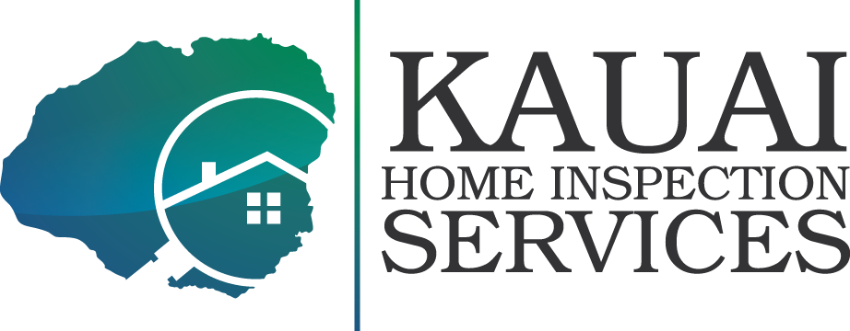
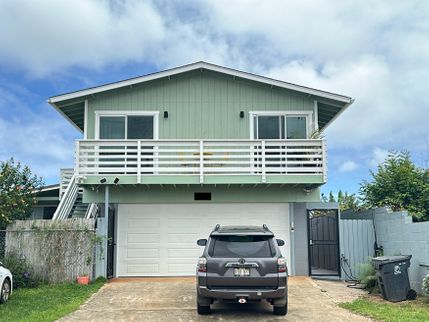
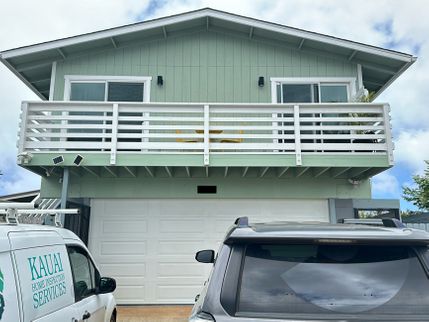
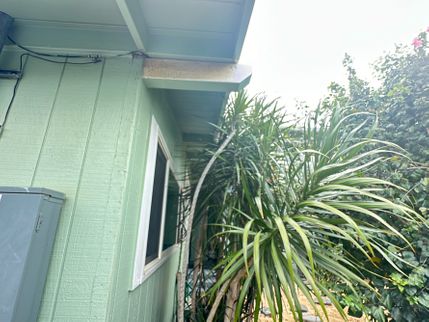
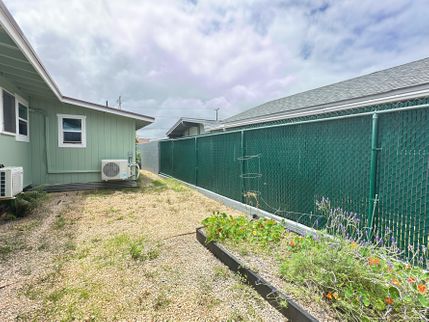
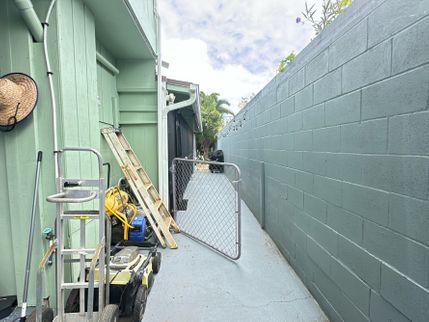
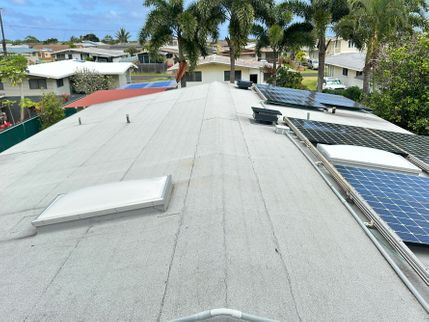
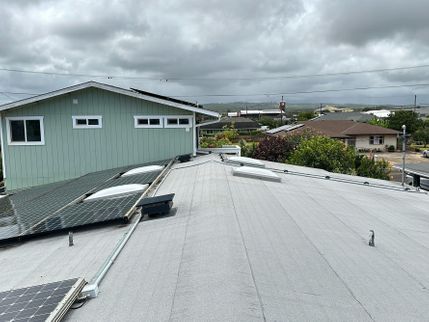


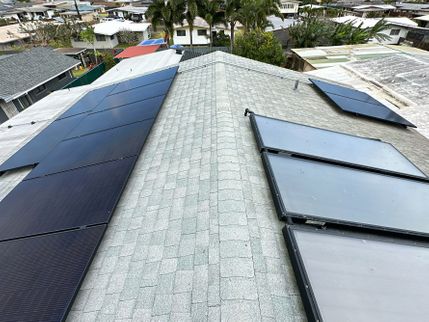
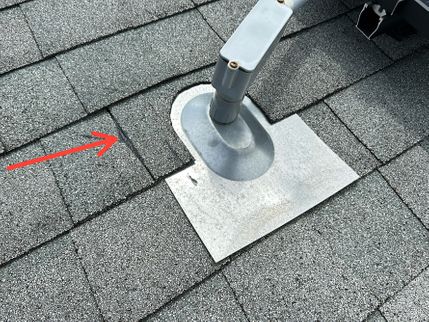
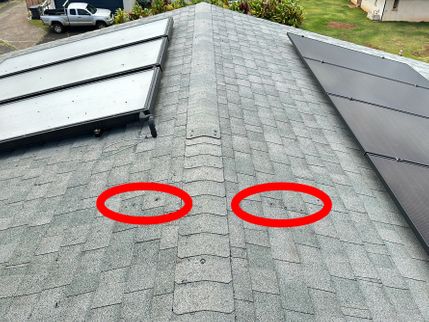
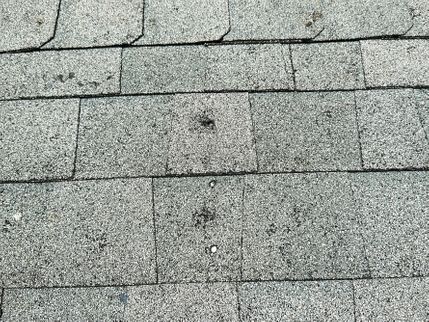
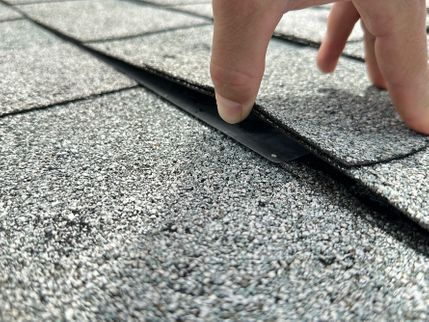
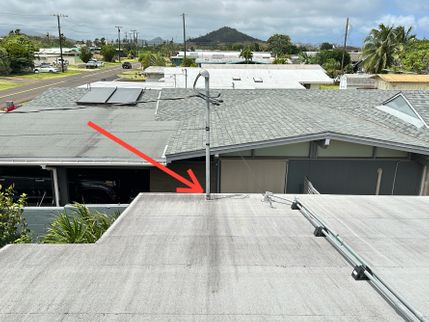
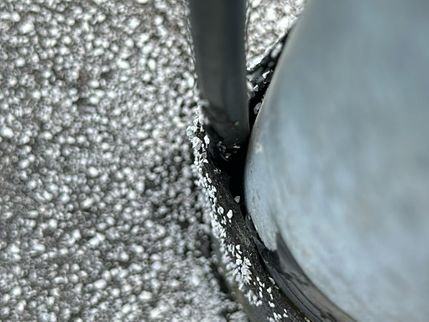
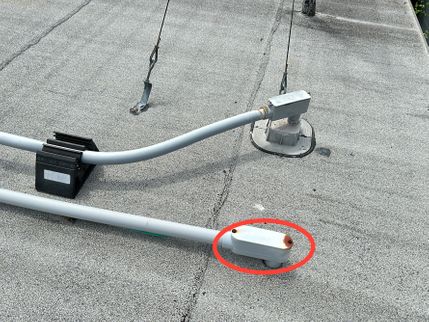
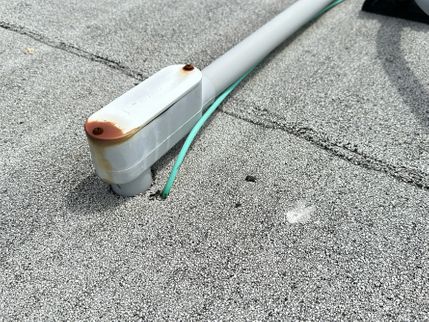
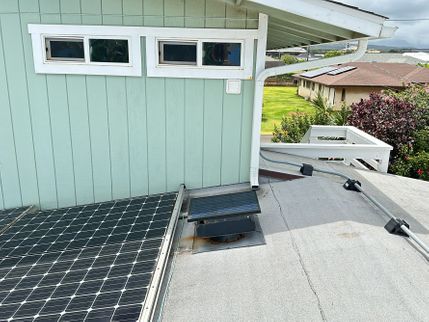
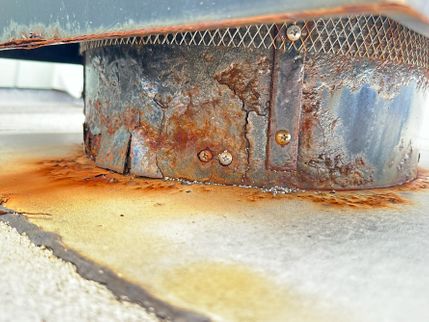
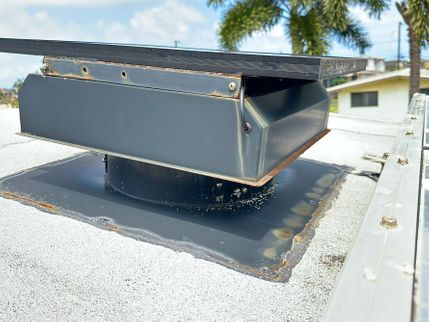
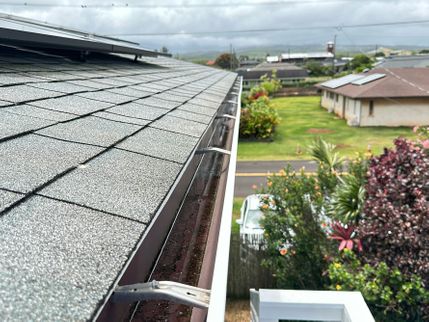
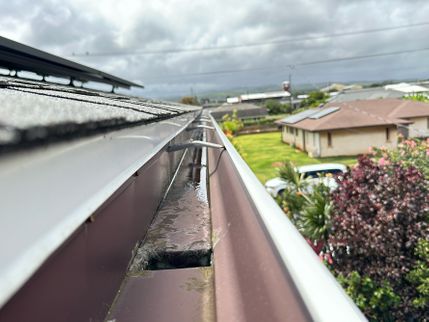

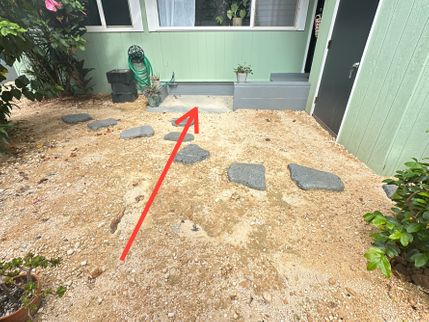
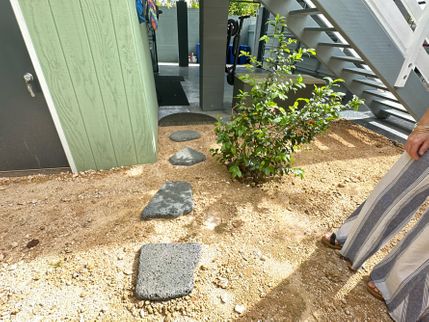
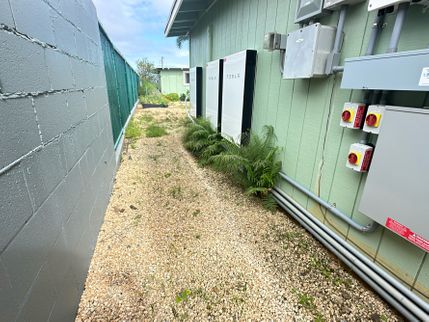
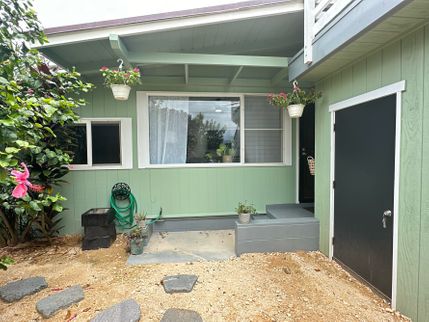
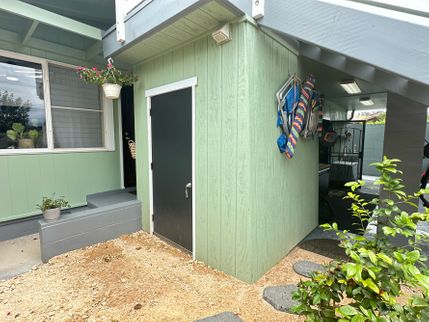
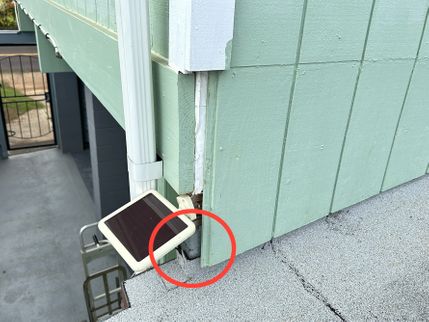
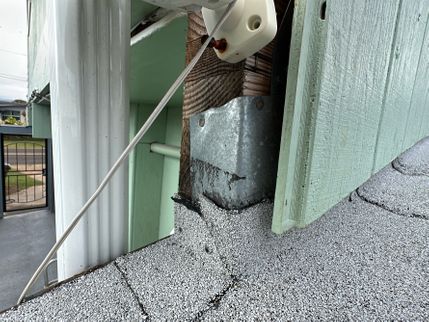
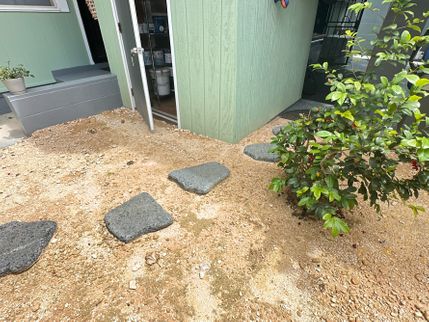
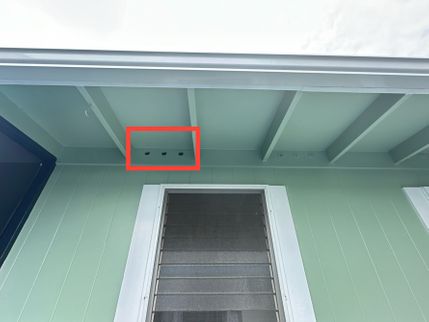

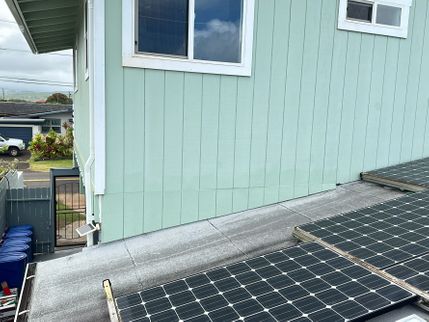
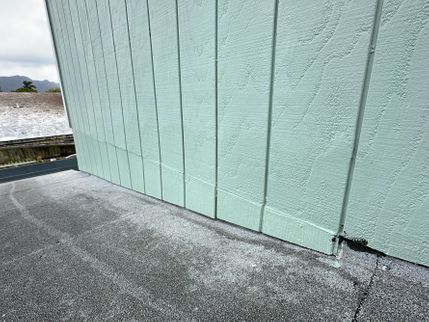
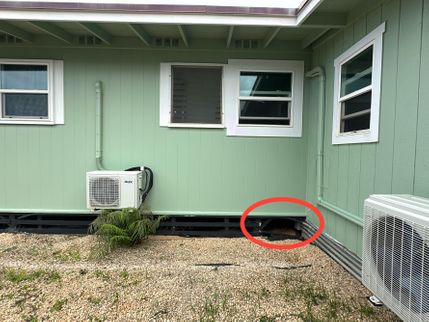
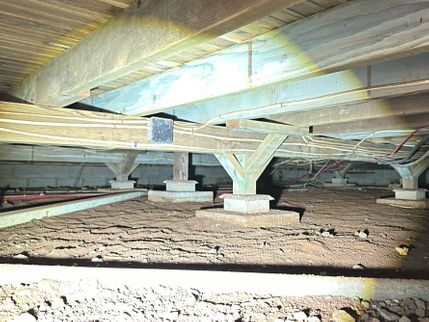
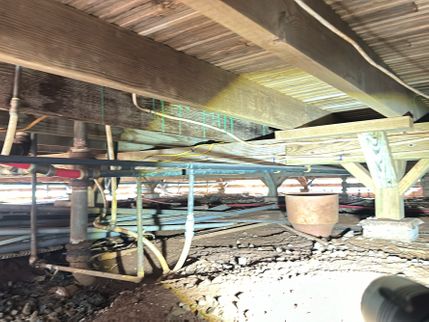
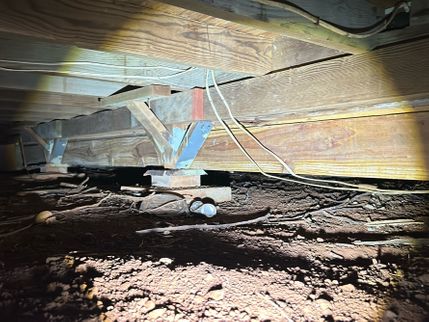
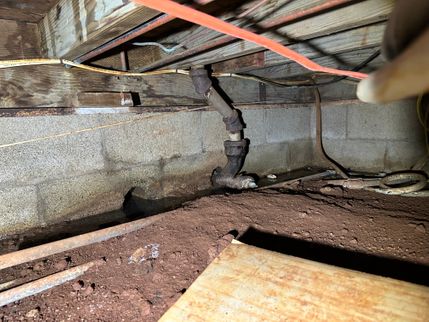

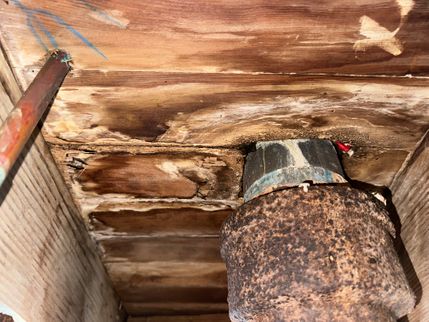



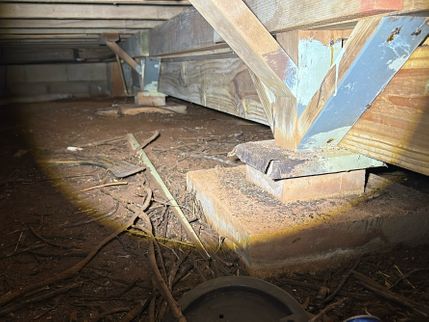
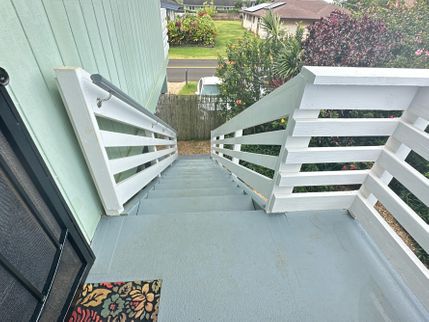

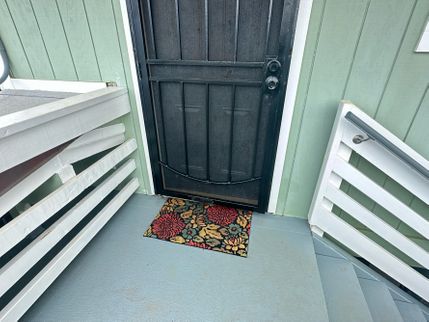
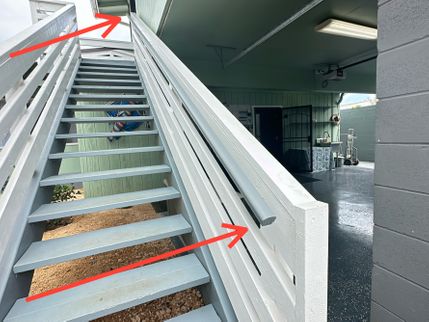
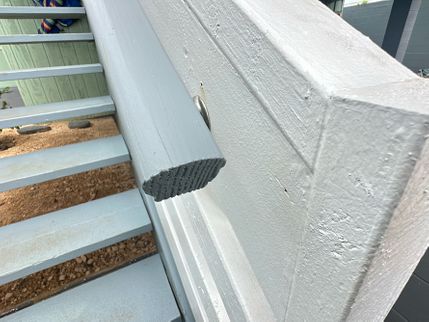
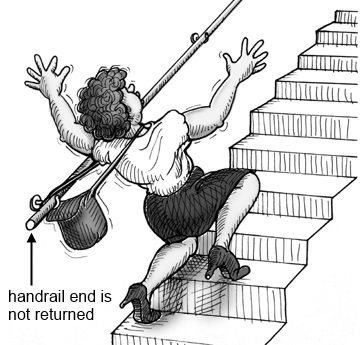
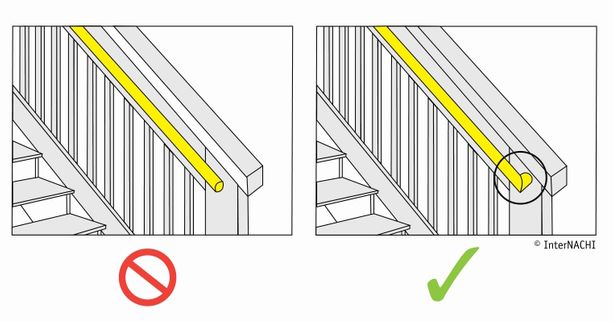
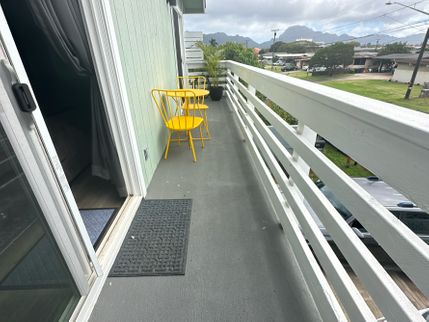
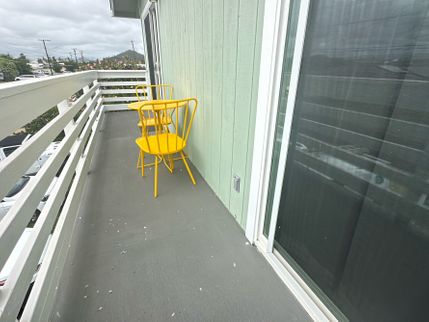
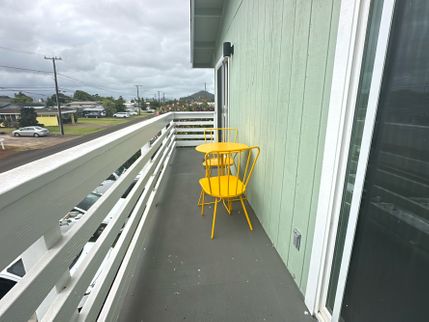
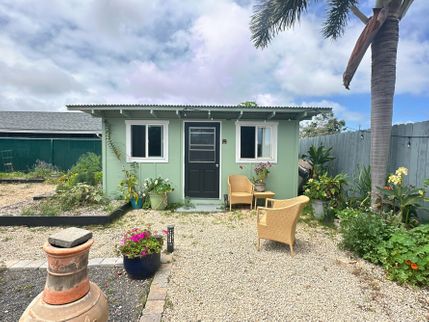
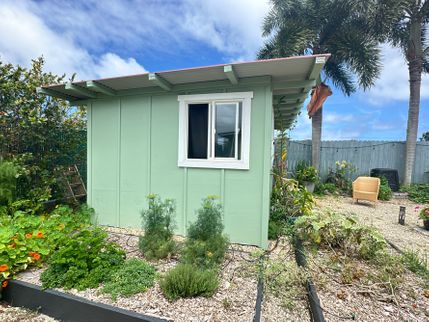

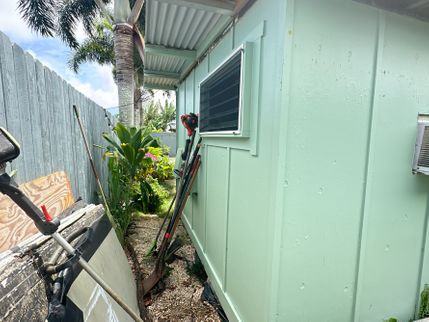
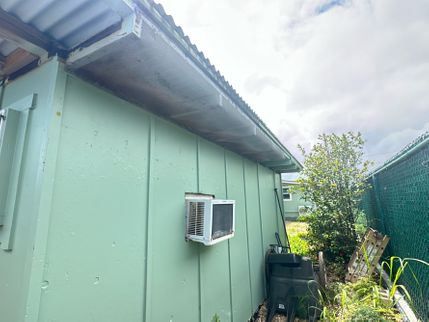
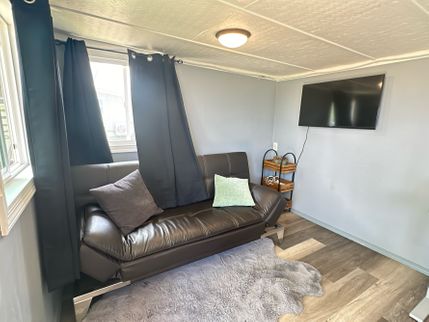

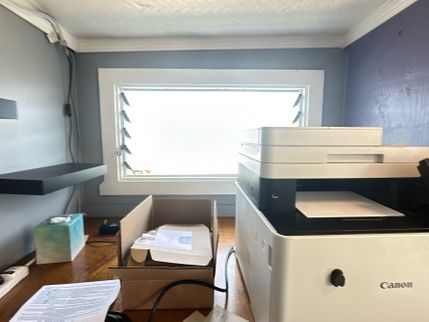
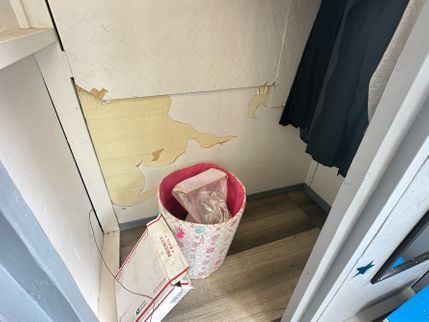
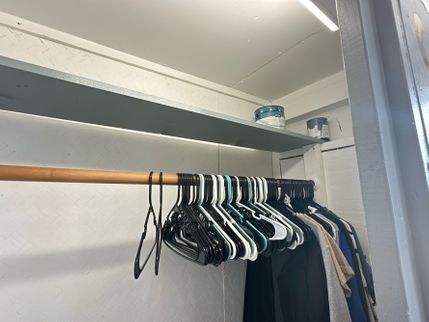

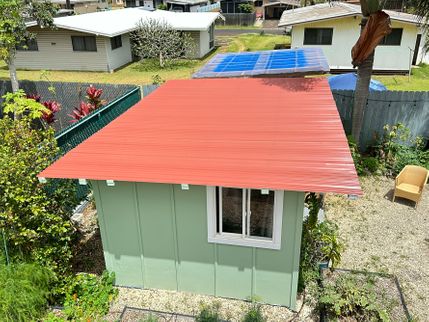
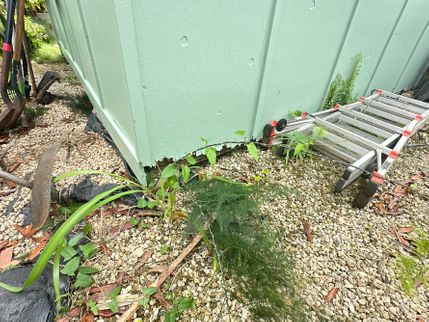
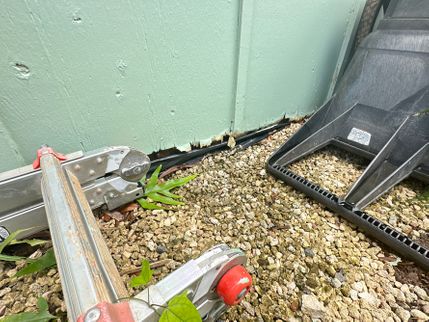

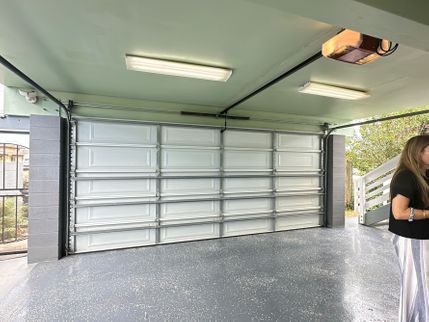
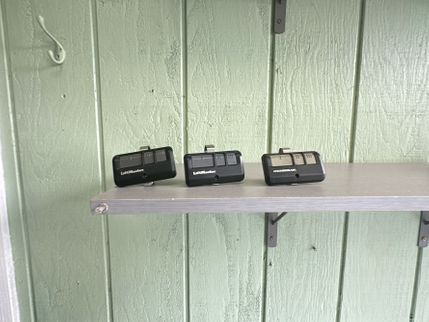
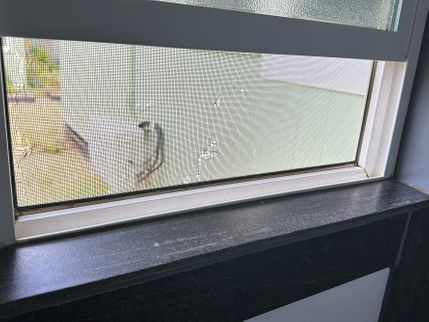
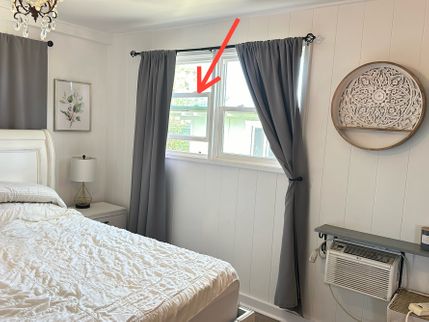
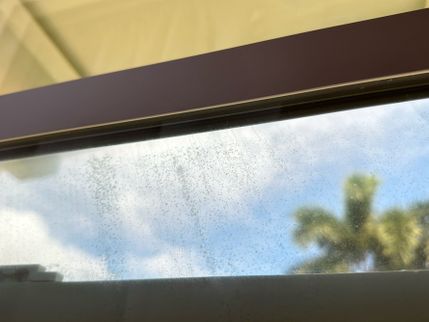
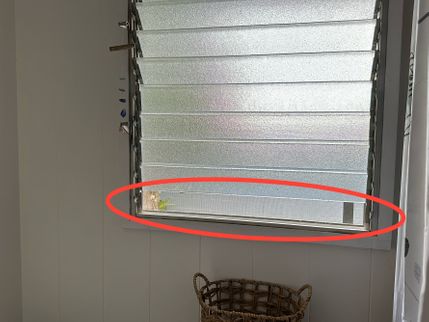
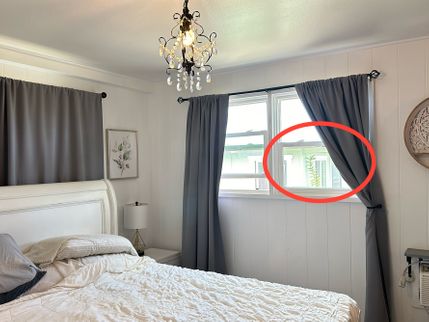
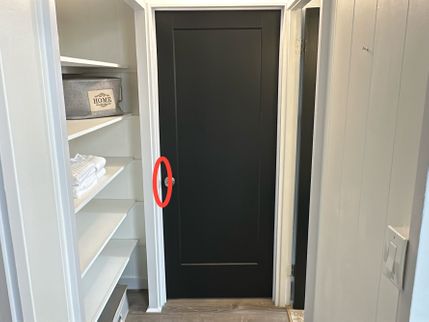

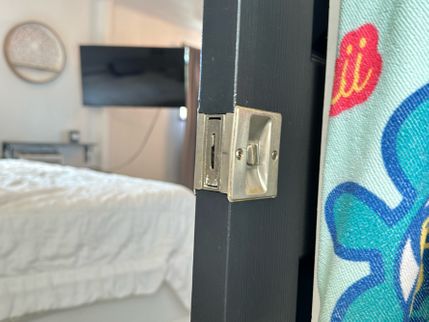

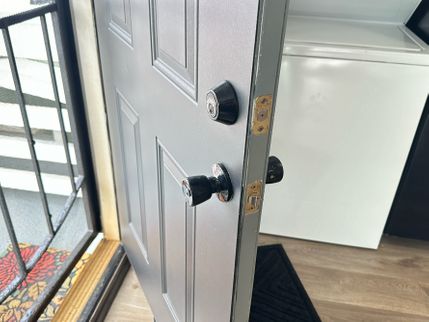
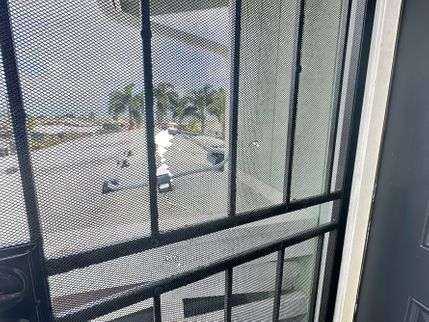

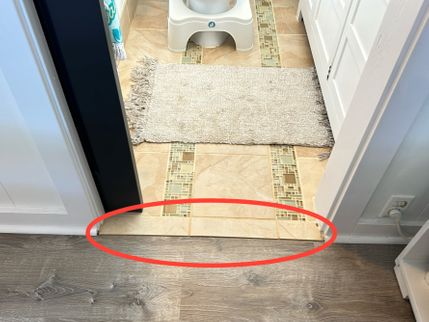
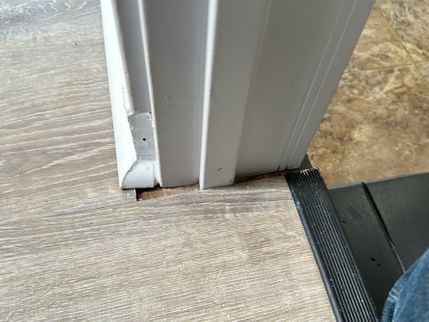
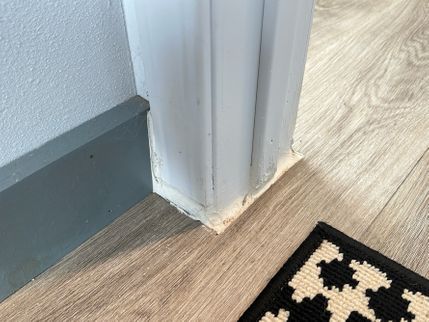

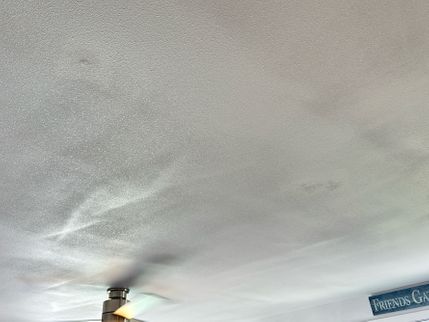
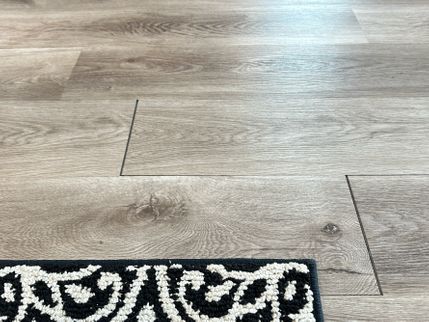

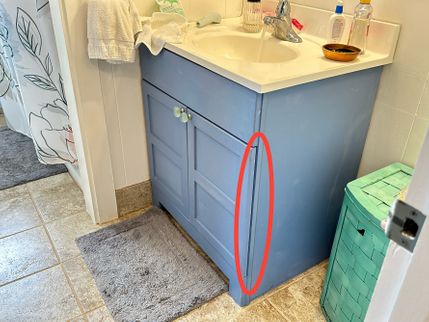

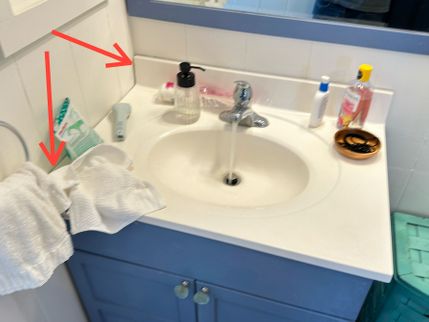
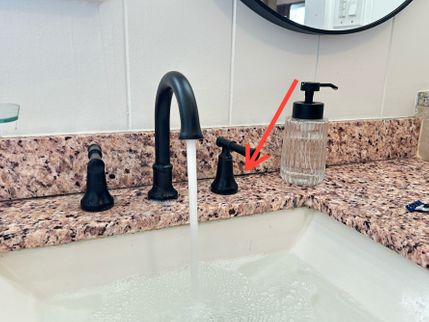
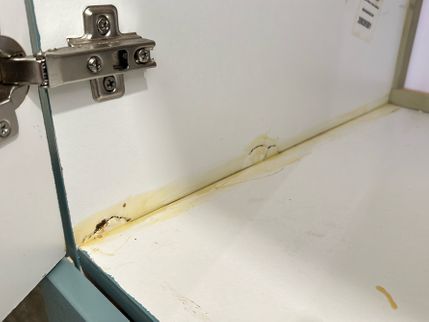

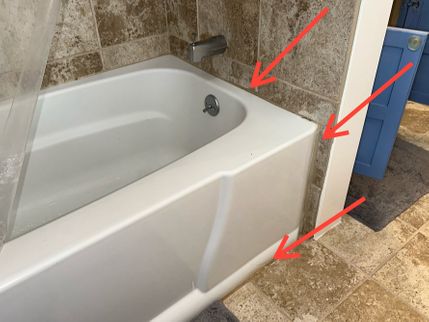
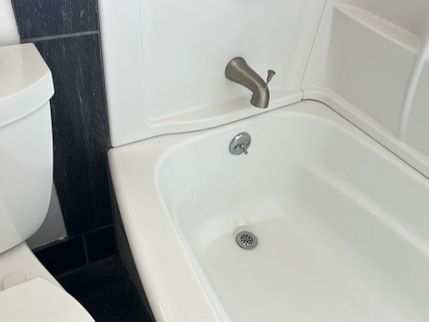

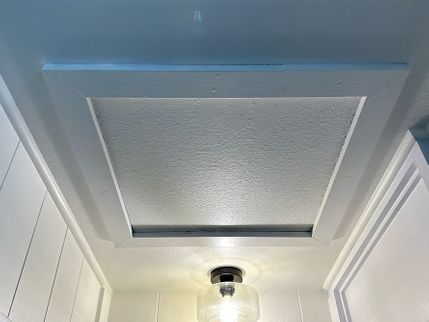
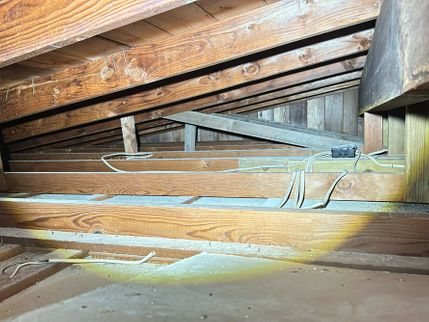
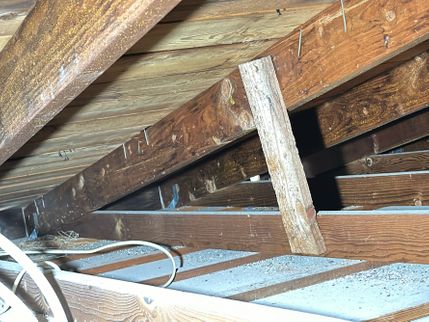
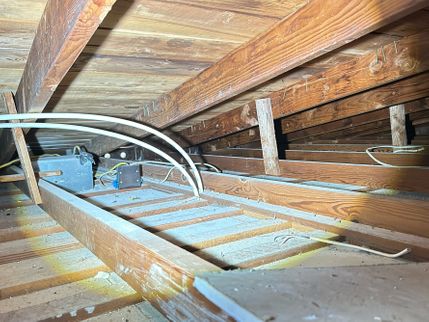
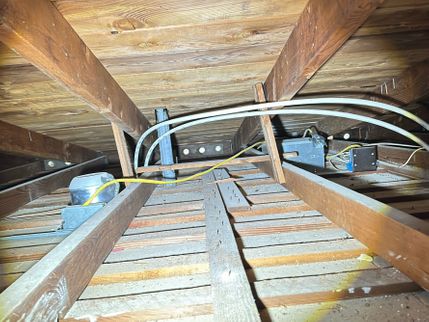

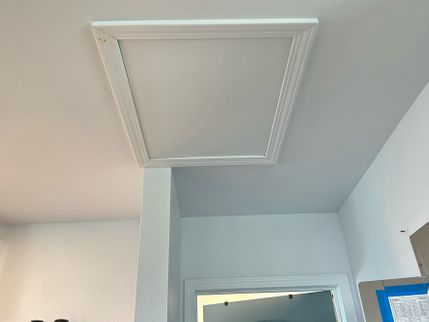

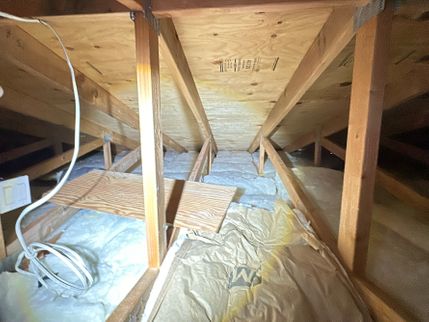
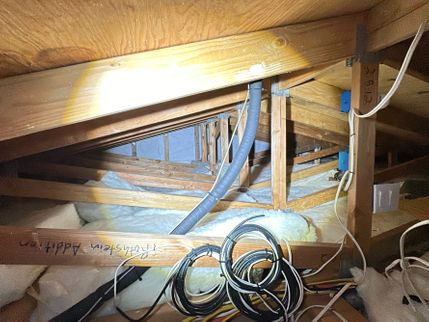

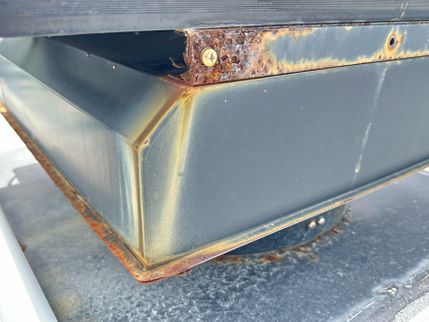
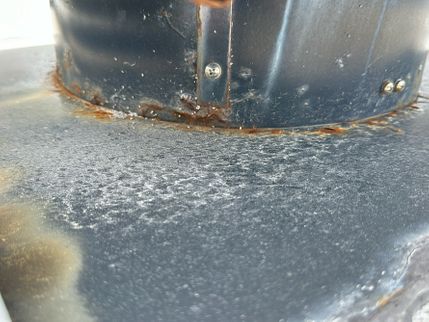
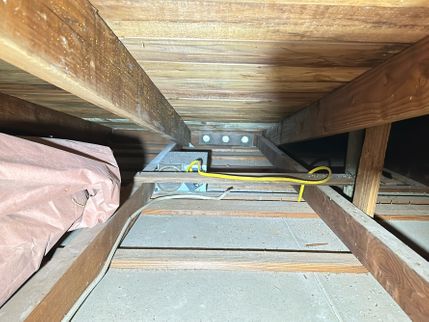
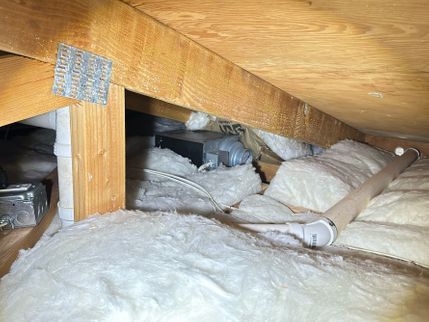
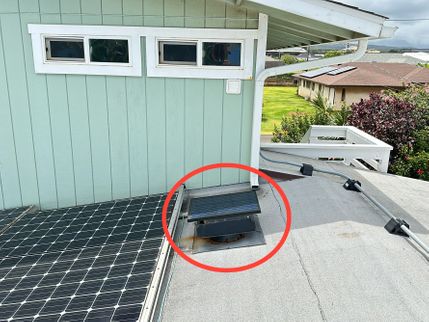
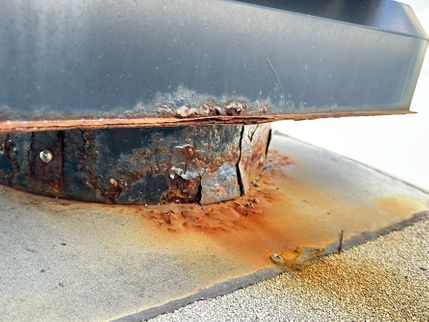

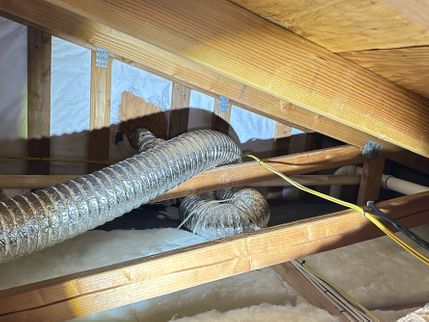
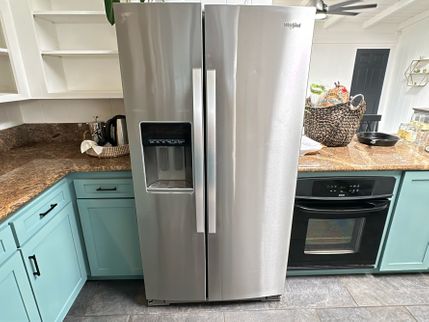
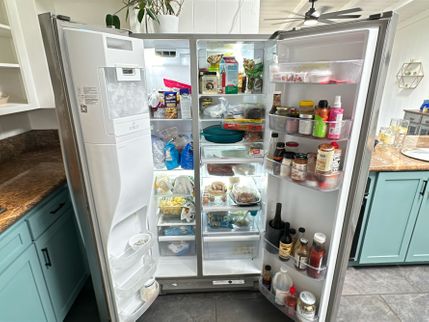
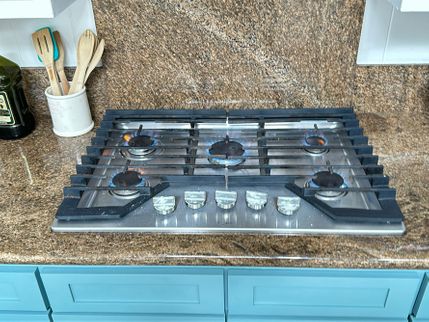
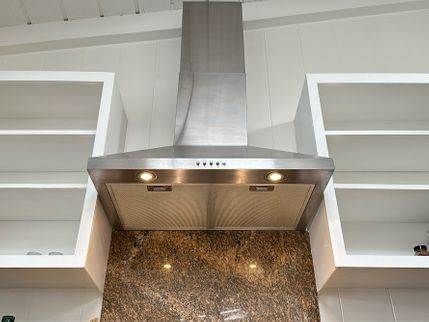
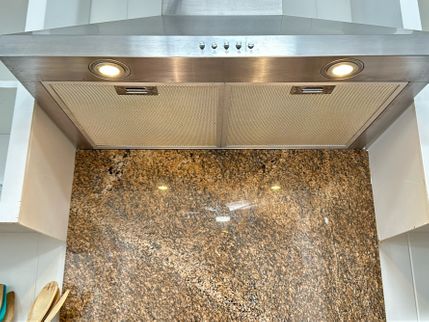

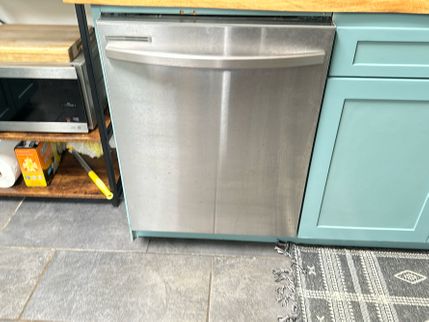

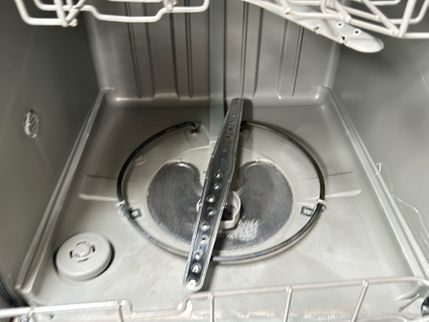
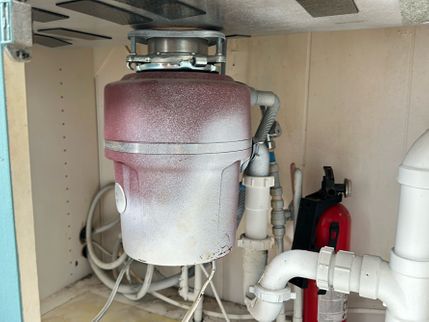
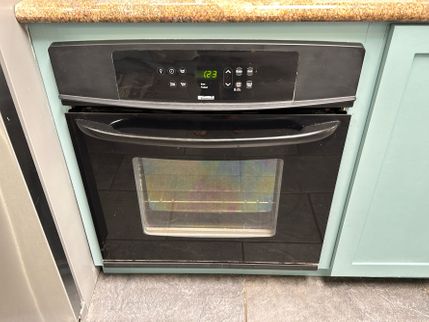
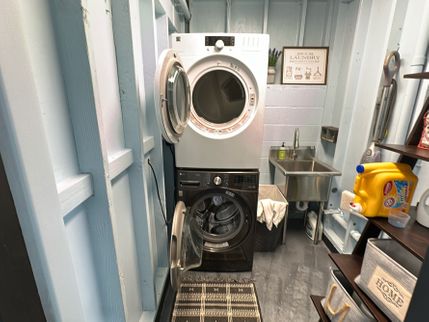
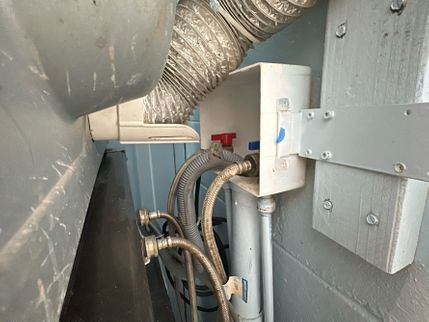
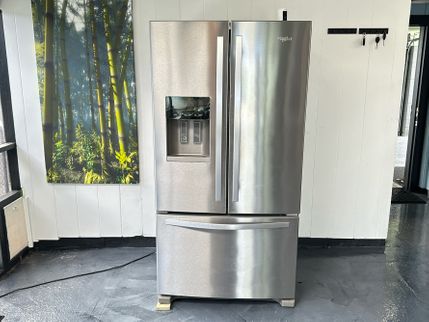
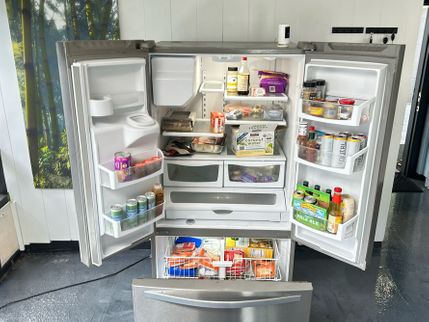
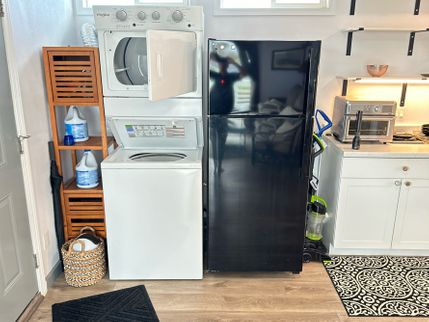
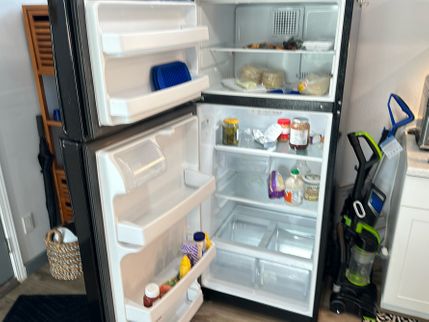
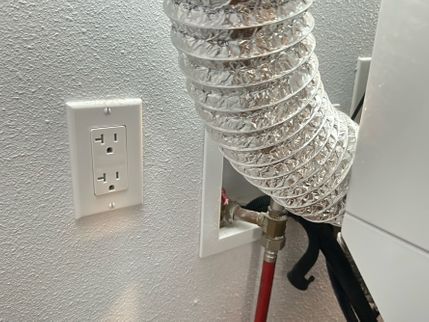
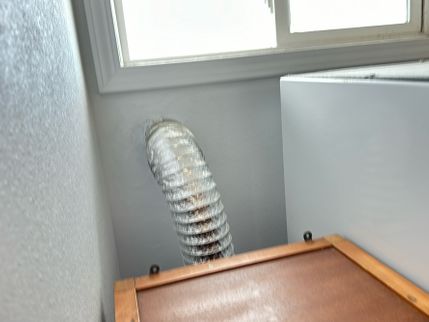

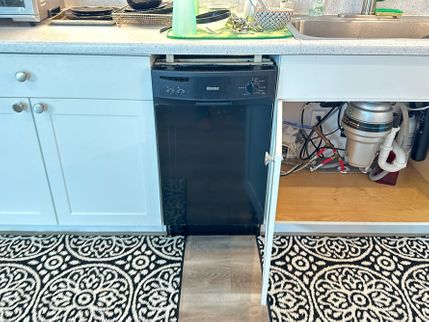
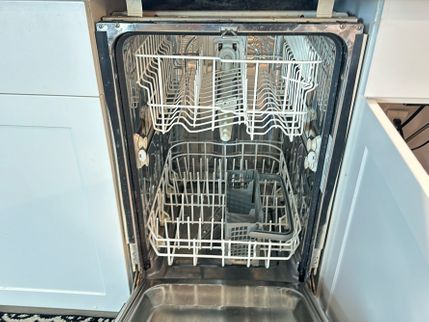

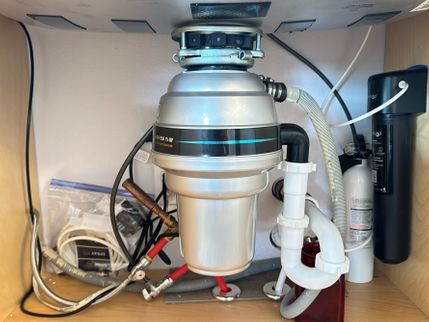
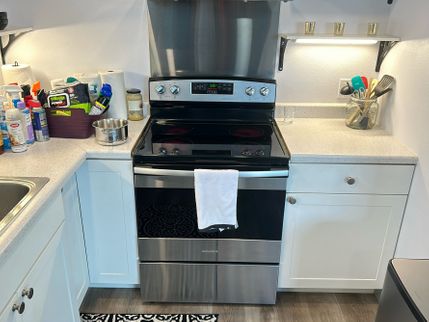
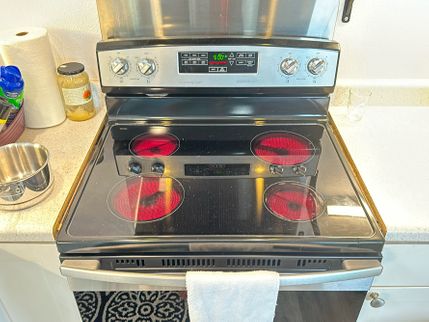
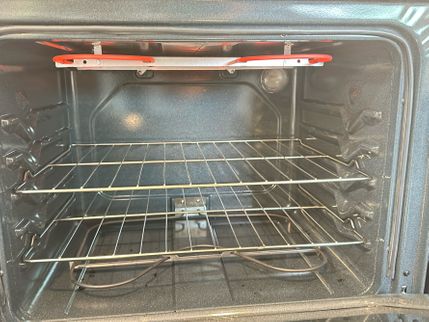
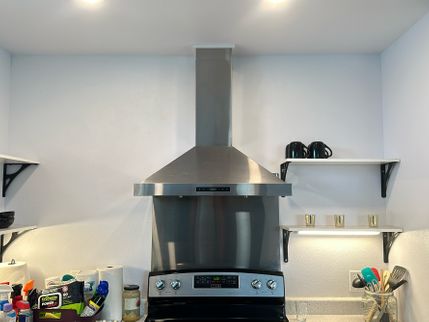
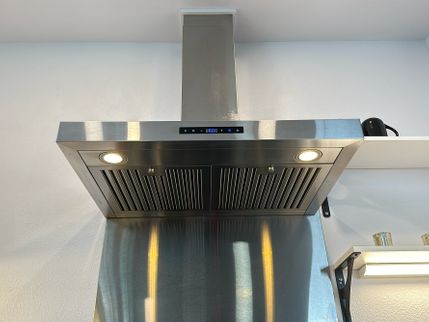

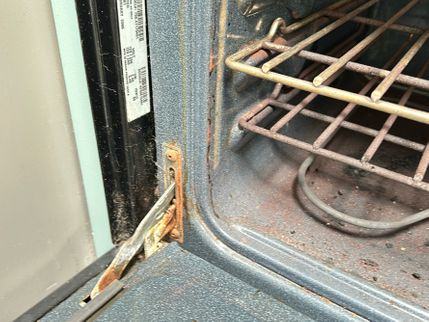
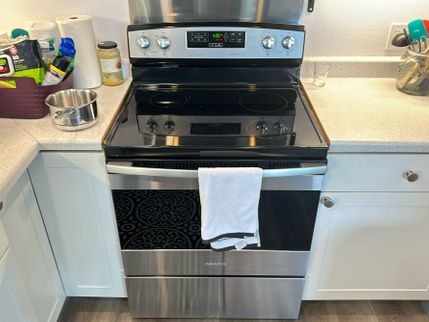
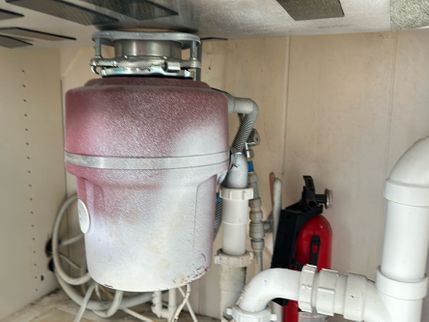


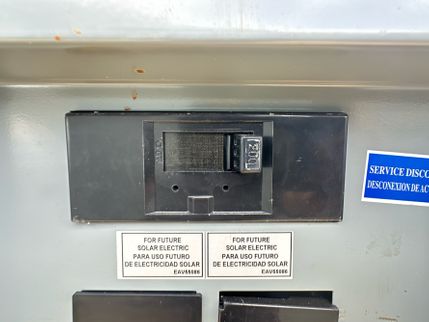
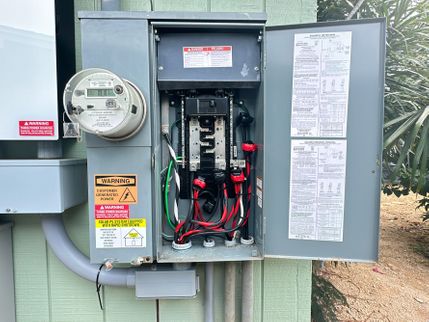
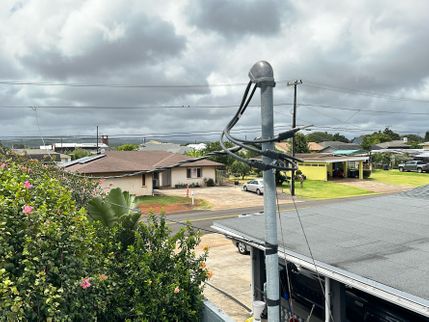
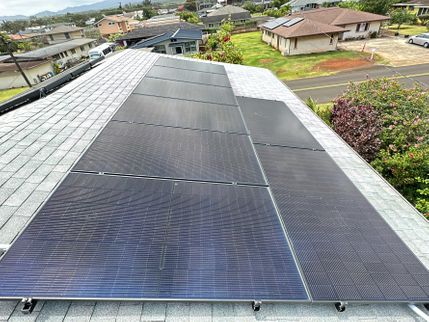

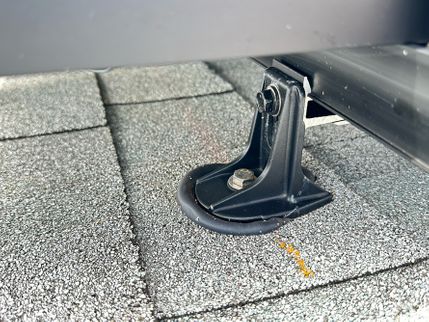
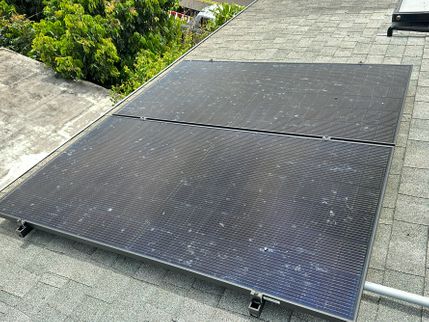
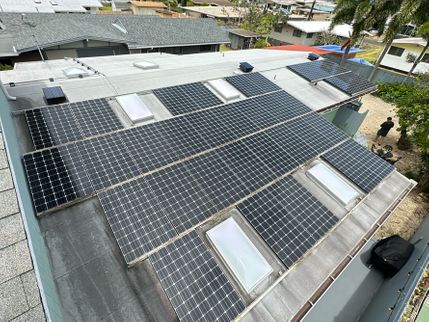
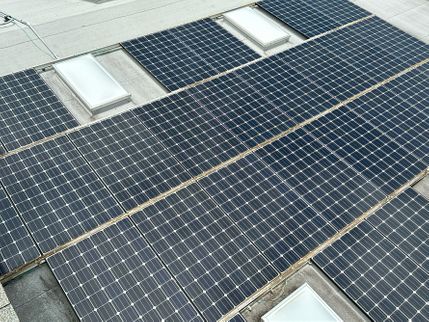
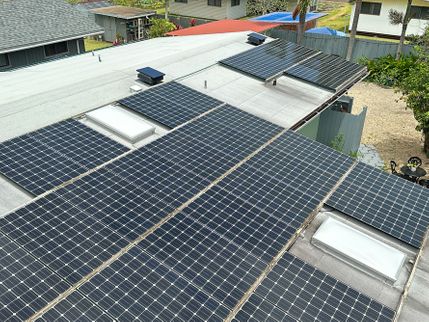
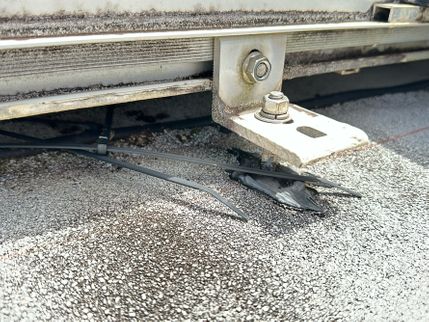
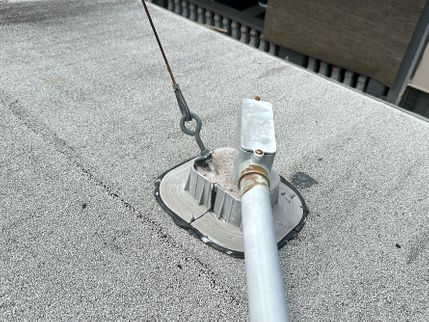
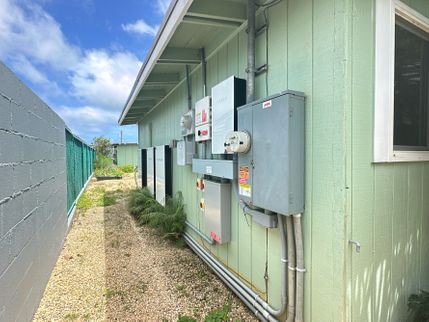
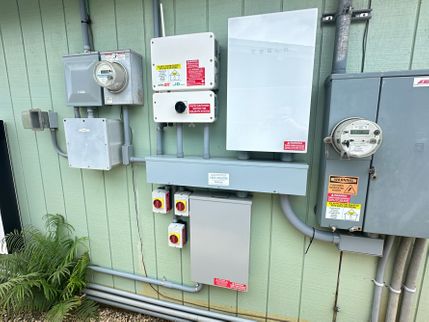
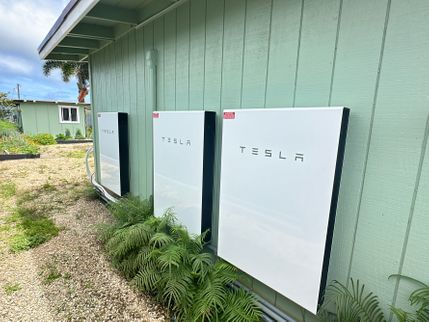
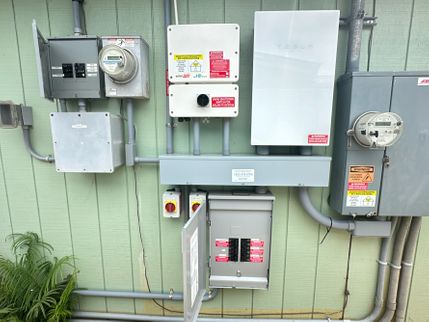
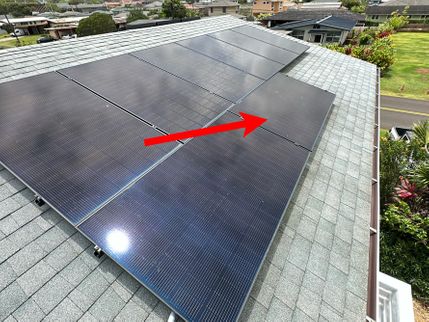
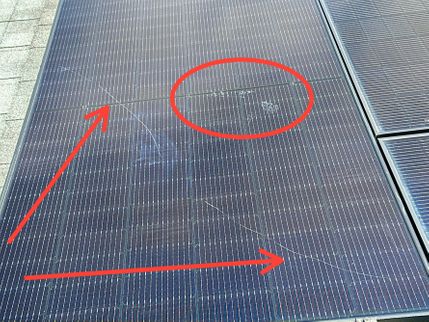

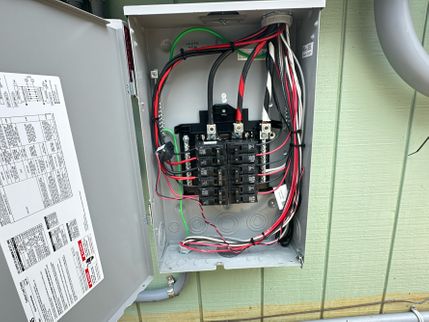

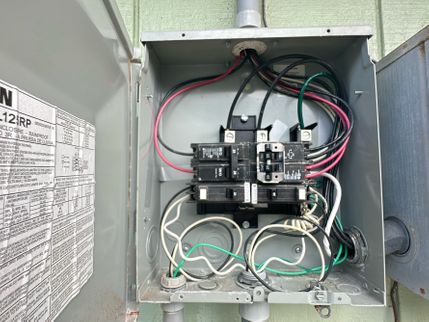
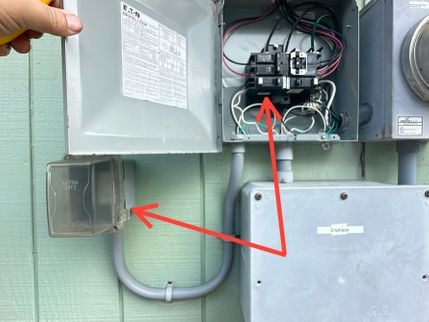


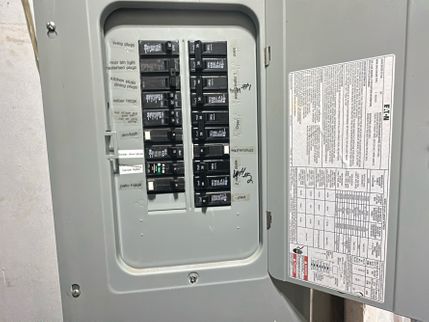
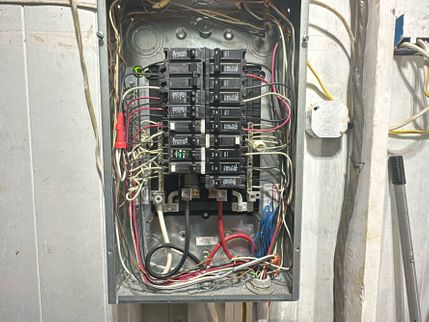
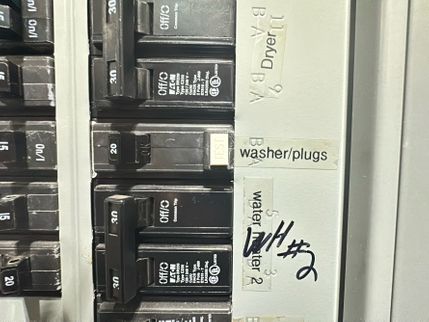
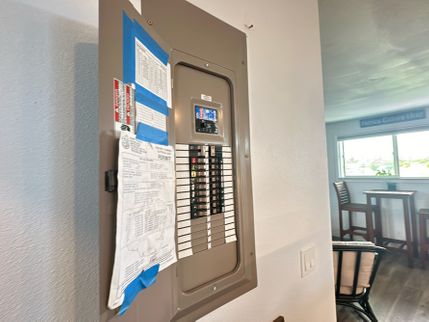
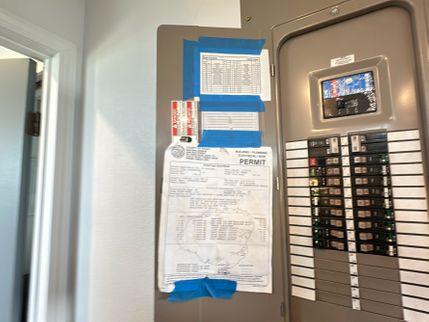
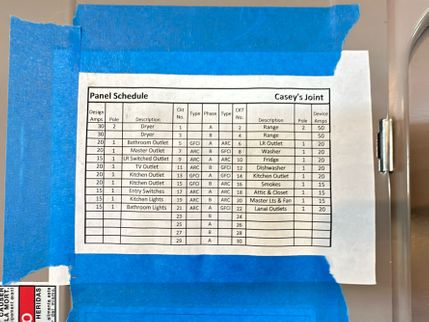
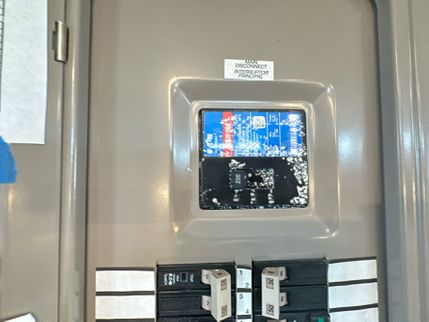
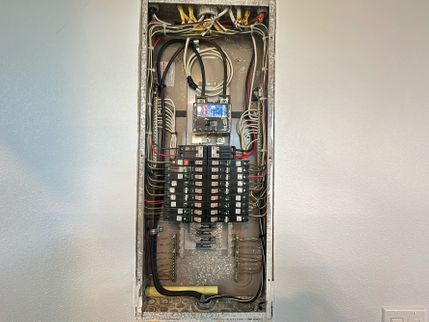

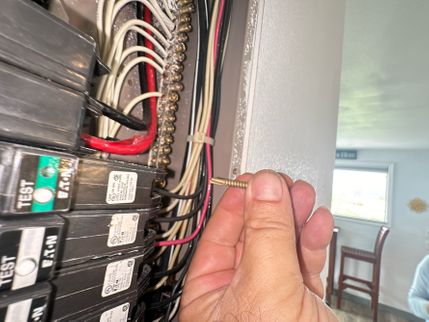

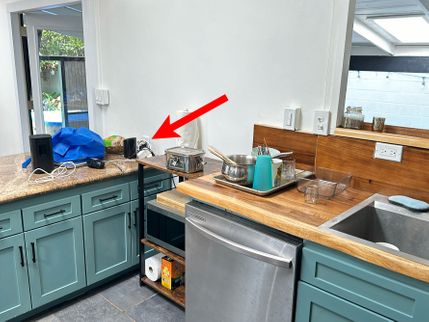
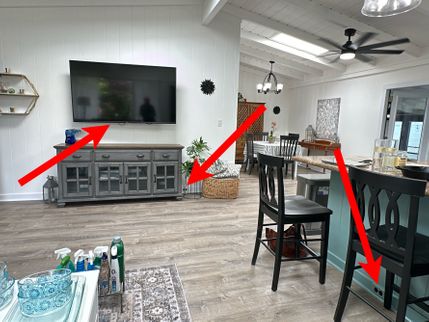
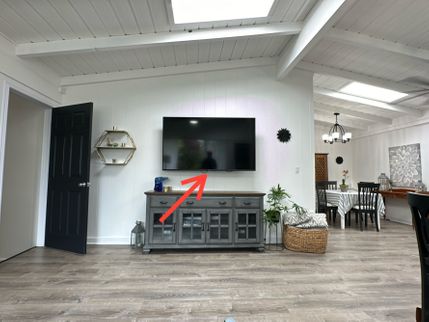
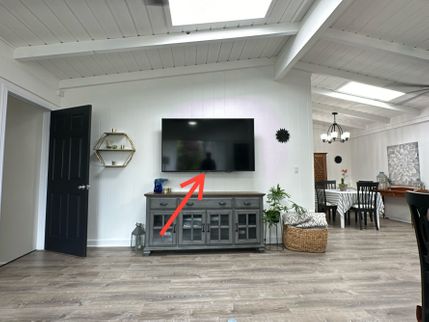
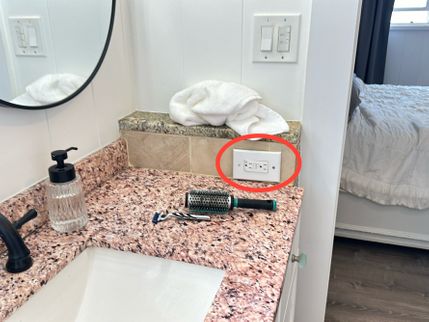

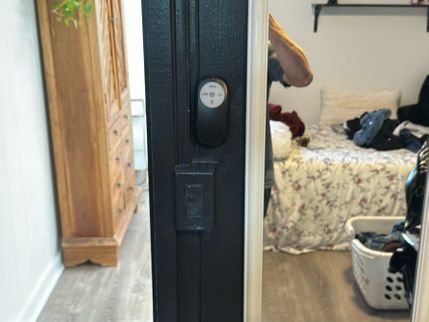

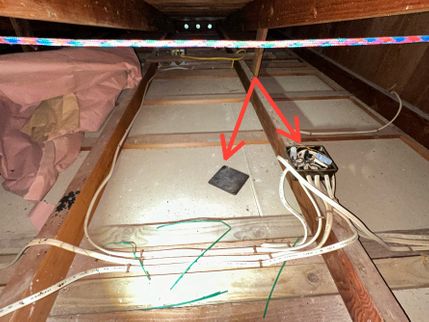

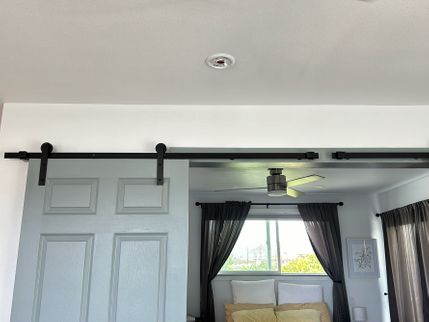


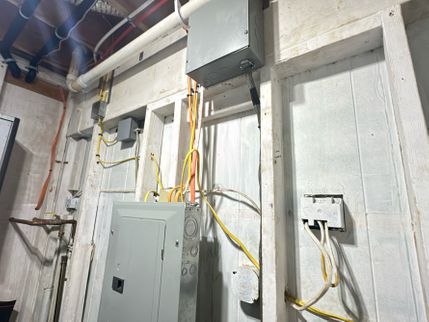

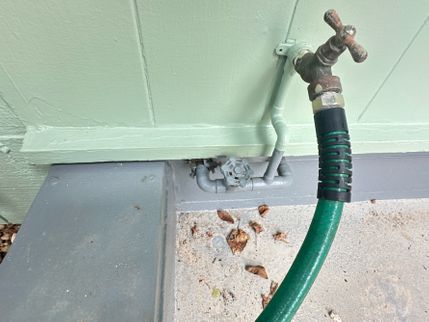

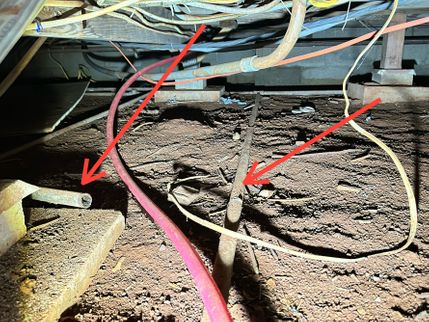

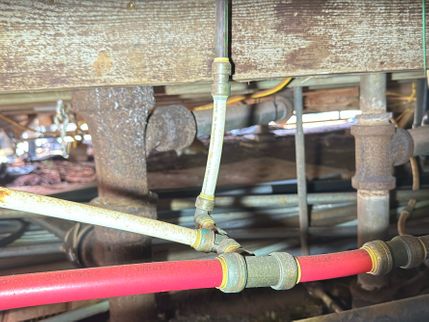
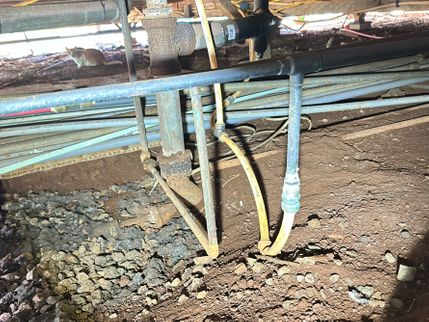
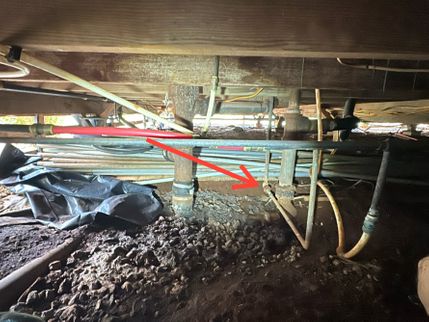
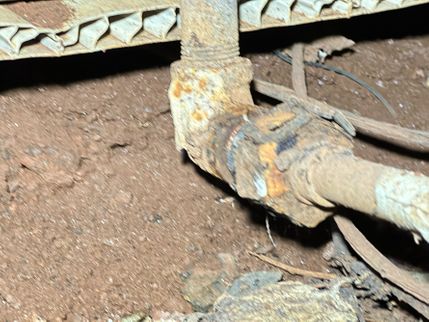
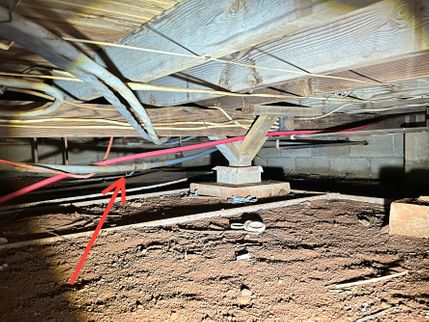
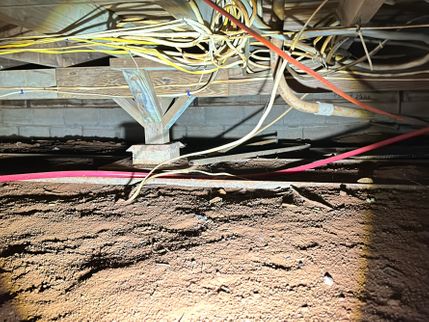



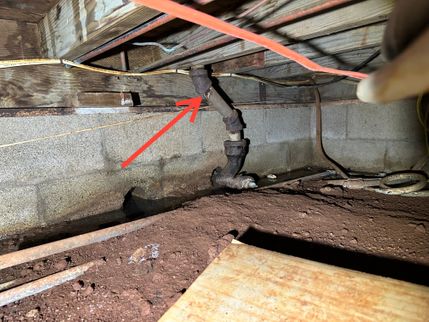
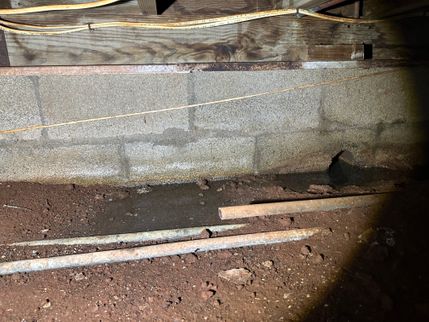
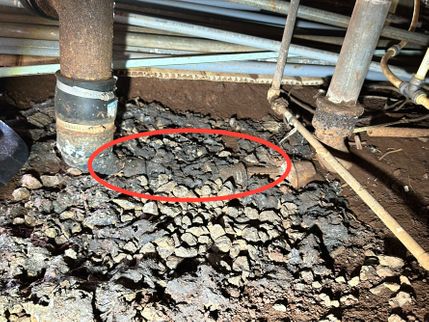
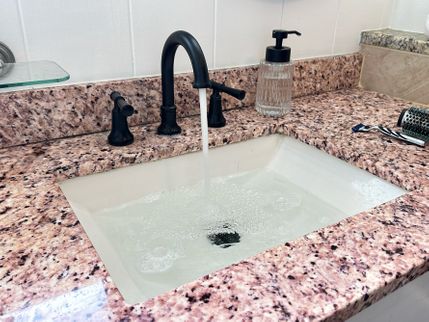
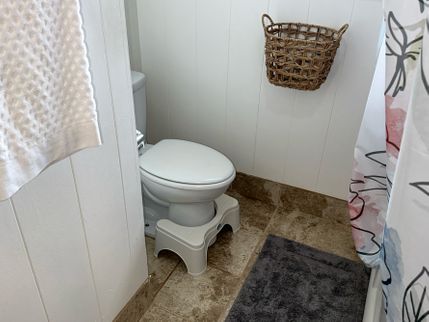
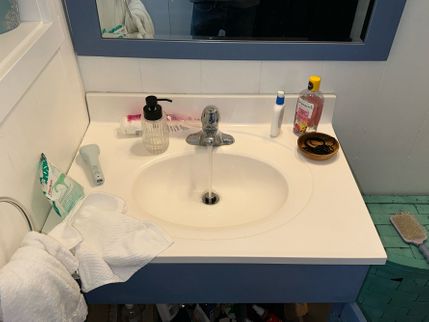

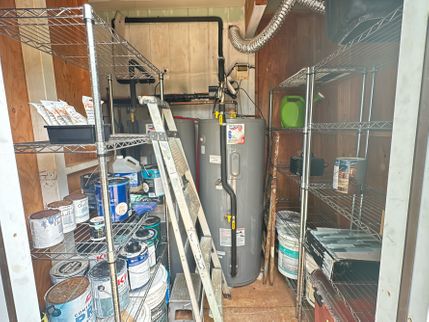
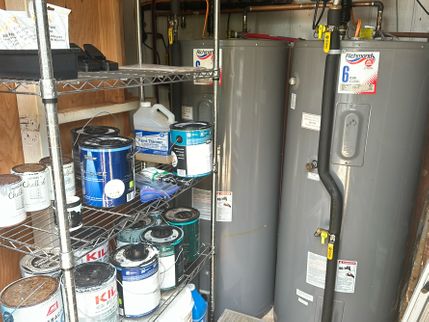
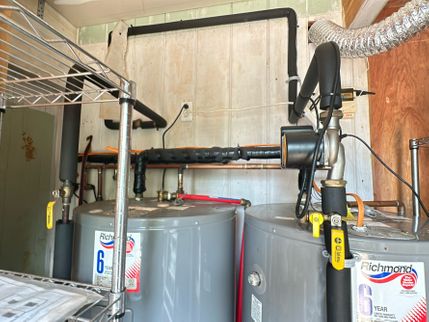
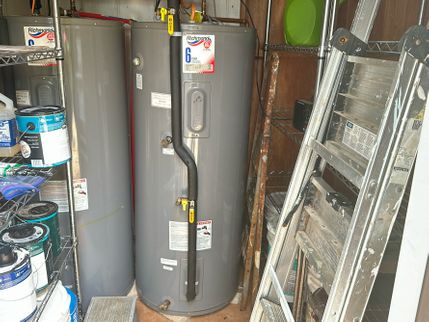

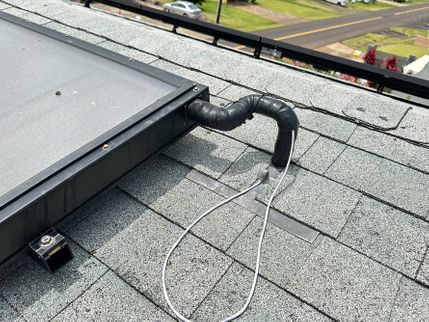
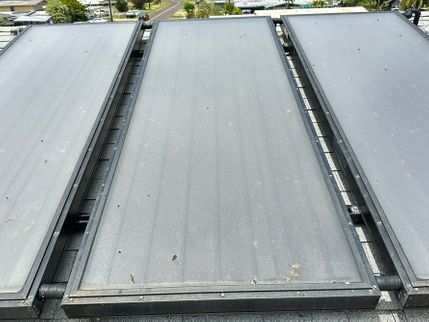
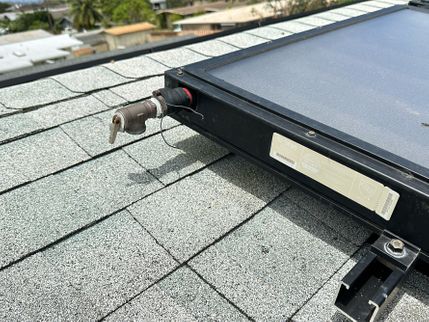
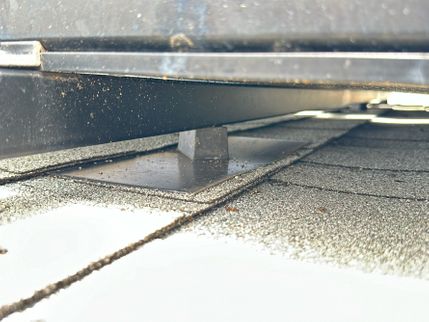
 (5) (1) (1) (1) (1) (1).jpg)

